GTU at 60
At the turn of the century, few could have imagined the global events that would ultimately lead to the formation of the GTU 60 years later. In that extraordinary year, 1962, a landmark union was formed based on a vision of what a model of collaboration through embracing differences — rather than being divided by them — could achieve. It was a radical vision, as were other movements gaining momentum at the time, such as civil rights, gender equality, and climate justice. The GTU has been at the forefront of advancing theological engagement with these issues, remaining steadfast in its commitment to building a better world through dialogue since 1962.
Watch our documentary to explore the legacy — and future vision — of the GTU.
The Documentary
From our founding in 1962 to the present day, explore milestones in the GTU story, the groundbreaking work of our community, and the notable figures who’ve shaped our institution. Click through each decade to explore our history—and our future.
Explore 60 years of the GTU
Select an Era
1961
Seminaries agree to cooperative program
The Interseminary Committee decided against the PSR proposal and voted in March 1961 to form a cooperative graduate program which would offer a Th.D. in church history. Each accredited seminary would set standards for the degree and confer it. Immediate problems plagued the group, with church history faculty wanting the support of other disciplines, notably Biblical Studies and Theology. In October 1961, all seminaries except PSR agreed to form a distinct corporation to grant the doctoral degree. SFTS clarified concerns over policy, administration, and academic standards.
1962
Graduate Theological Union founded
On September 24, 1962, Articles of Incorporation were signed by representatives of Berkeley Baptist Divinity School (now Berkeley School of Theology), Church Divinity School of the Pacific, Pacific Lutheran Theological Seminary, and San Francisco Theological Seminary in order to offer a cooperative graduate program leading to a Th.D. degree. Golden Gate Baptist Theological Seminary was also a participant but withdrew due to synod concerns.
1962
Sherman E. Johnson, Dean, 1962-1963
Sherman E. Johnson (1908-1993) was selected as the first dean of GTU while also serving as the dean at Church Divinity School of the Pacific (1951-1972). He had played a key role in the initial interseminary discussions leading to the formation of the GTU and is credited with suggesting the name Graduate Theological Union.
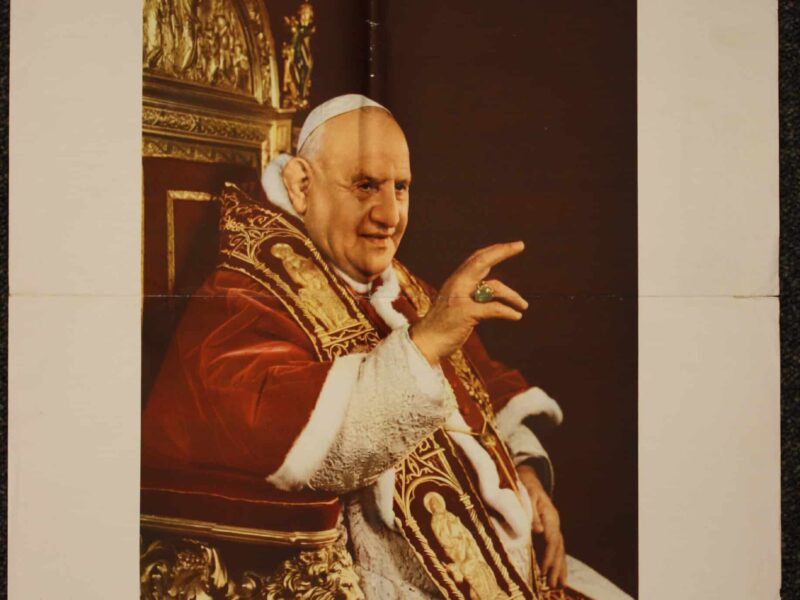
1962
Vatican II opens ecumenical possibilities
Vatican II created possibilities for cooperation heretofore unlikely between Protestants and Catholics. The Second Vatican Council, or Vatican II, an ecumenical council addressing the Catholic Church's relationship to the modern world, opened on October 11, 1962 and closed on December 8, 1965. Pope John XXIII, who gave notice of convening the council within months of his election, noted that it was time to open up the windows of the church and let in some fresh air. Among the decisions was to issue Unitatis Redintegratio, the decree on ecumenism, promulgated in November 21, 1964, which laid out the ways and means for all Catholics to respond to a "desire for the restoration of unity among all the followers of Christ."
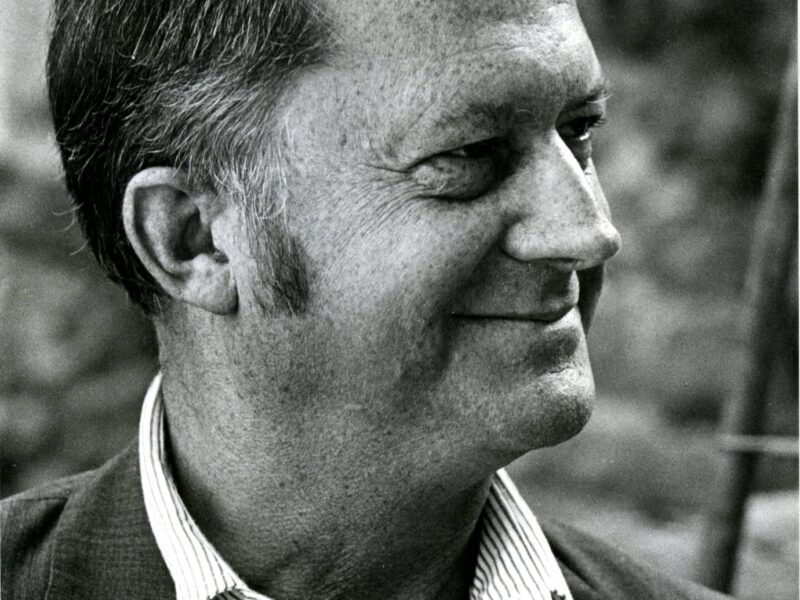
1963
John Dillenberger, Dean 1963-71, President 1967-71
John Dillenberger (1918-2008), who had just arrived at SFTS in 1962, became dean (from 1963) and the union's first president (from 1967) until 1971. He later returned as President from 1999 to 2000. He specialized in the relationship between religion and science: his Protestant Thought and Natural Science was a standard introduction on the topic for three decades. Under Dillenberger's leadership, the union expanded from four schools to nine, greatly assisted by his efforts with the Catholic seminaries; centers were brought into the union that focused on Jewish studies, women and theology, religion and culture, and the Black Church; doctoral areas were expanded to represent all categories of theology and religion; and a common library was established. Upon his retirement, trustee Jane Newhall endowed a chair in historical studies in his name.
"The name of John Dillenberger is almost synonymous with the GTU in its formative years. Without his pursuit of a broad ecumenism and his role in the creation of the consortium library the GTU as known today would not exist." - Robert B. Coote and John S. Hadsell, San Francisco Theological Seminary: The Shaping of the Western School of the Church, 1971-1998, 1999, 193

1964
Three new member schools join the GTU consortium
Pacific School of Religion, which had already been in the collaborative discussions, joins the GTU along with Starr King School for the Ministry (then Thomas Starr King School for Religious Leadership), and the consortium's first Catholic institution, the Dominican School of Philosophy and Theology (then College of St. Albert the Great).
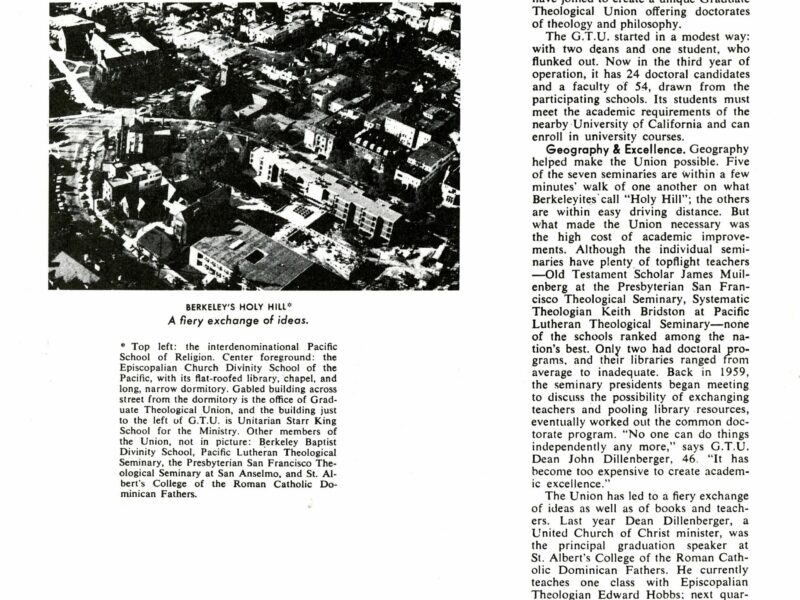
1964
Time features GTU in “Seminaries: Joining the Theologians for Thrift & Tolerance”
Two years after its founding, GTU appears in the Religion section of the November 6 issue of Time.
"The G.T.U. started in a modest way: with two deans and one student, who flunked out. Now in the third year of operation, it has 24 doctoral candidates and a faculty of 54, drawn from the participating schools. Its students must meet the academic requirements of the nearby University of California and can enroll in university courses." Time, The Weekly Newsmagazine, Vol. 84 No. 19, November 6, 1964
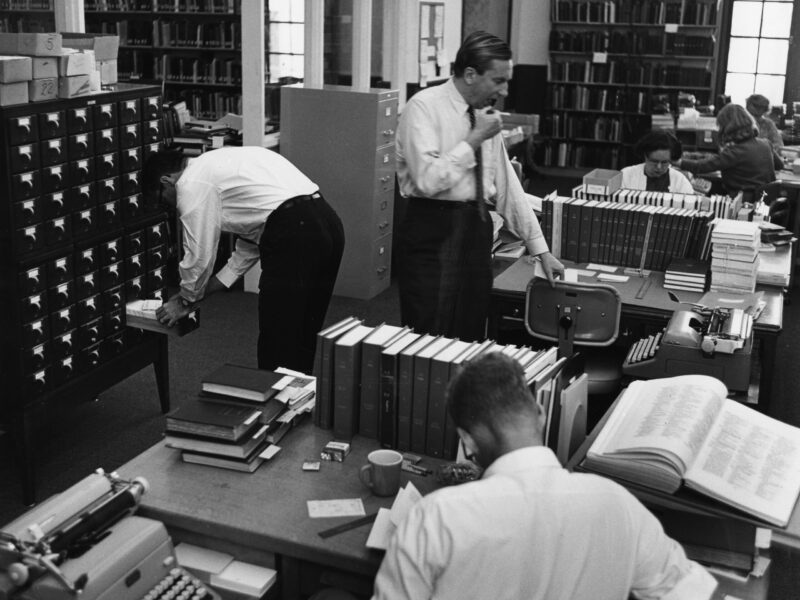
1964
Coordination of library services established
The GTU Library Committee, created in 1963, establishes the Bibliographical Center in the following year. The Center was not a library, but performed specific functions for the libraries of the member schools. Operating from the basement of the building at 2465 LeConte (purchased from SFTS and BDS), the Center created a union catalog, assembled a reference collection, and set up procedures for cooperative book selection, ordering, and cataloging.
1966
Jesuit School of Theology joins consortium
Founded as Alma College in the Santa Cruz Mountains in 1934, the school opened as a theologate for Jesuits of the Oregon and California Provinces, becoming a pontifical faculty in 1945. In 1958, the theologate affiliated with Santa Clara University (SCU) as its School of Theology. In the midst of Vatican II (1964), the faculty asked to join the GTU. The school was admitted to the union in 1966, but the province was divided over its location, near the University of San Francisco. In 1969, authorities decided that the school would relocate to Berkeley. Opening for the 1969-70 school year, the school officially became the Jesuit School of Theology in Berkeley, severing its affiliation with SCU. The school reconnected in 2009 to become the Jesuit School of Theology of Santa Clara University.
1968
Franciscan School of Theology joins consortium
In 1854, Mission Santa Barbara was chartered as an apostolic college and continued in that capacity until 1885. From 1869 to 1877, the school also functioned as a college for laymen. In 1896, it began as a four-year high school seminary program. The high school and college departments became separate institutions in 1901 and 1929. Mission Santa Barbara remained the center for theological studies and continued to operate as a seminary until 1968, when the theological school moved to Berkeley as the Franciscan School of Theology. FST remained a member until the school relocated to become part of the University of San Diego in 2014.
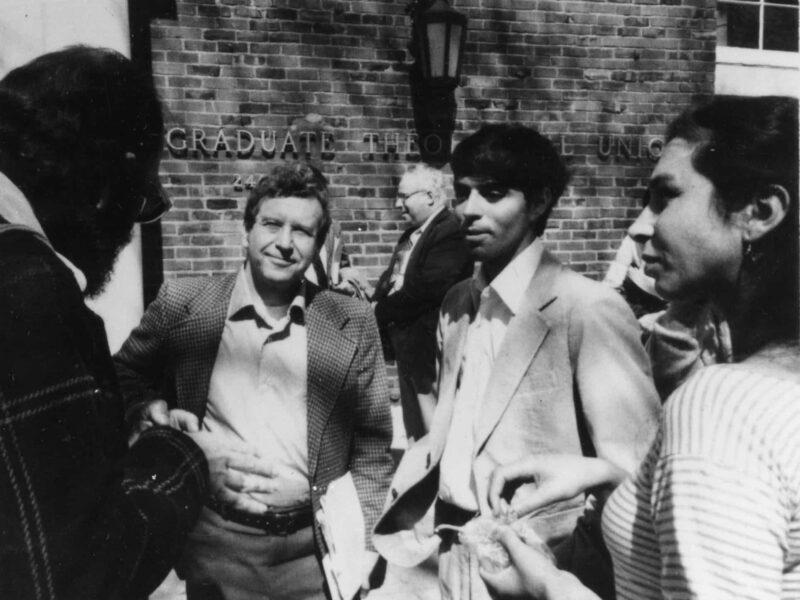
1968
Center for Judaic Studies founded
The Center for Judaic Studies (later the Center for Jewish Studies and now the Richard S. Dinner Center for Jewish Studies) was GTU's first specialized institute. Professor and Rabbi David Winston was appointed to head the Center, becoming the third faculty appointment to be supported by GTU funding. While not a rabbinical school, the Center researches Judaism as a religion and locus of culture from an academic perspective.
1968
School of Applied Theology becomes affiliate
The Institute of Lay Theology (ILT), first located at the University of San Francisco, pioneered the education of full-time lay ministers for parish work. The ILT was invited to become an affiliate, which it did in 1968 as the School of Applied Theology, located in Oakland. The school continued there through 2014.
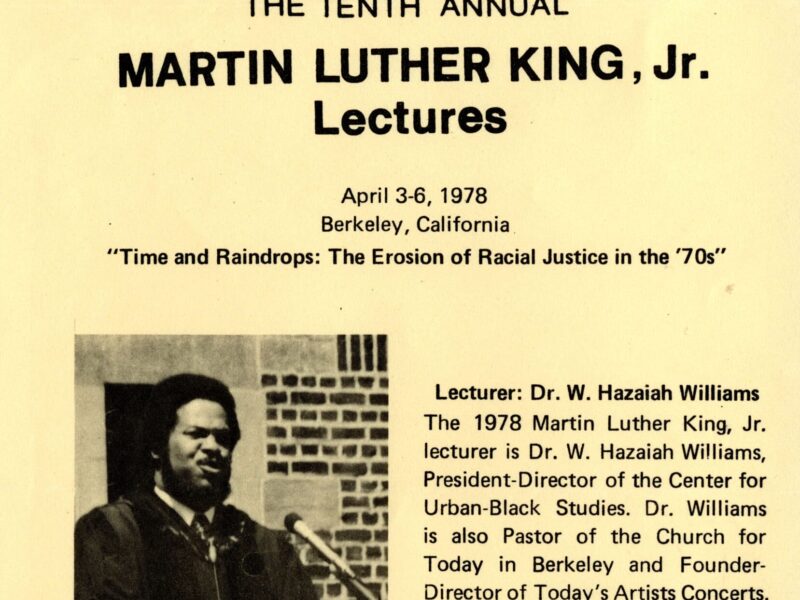
1969
Center for Urban-Black Studies founded
The Center for Urban-Black Studies integrated theological study with Urban-Black and Urban-Minority communities. In addition to encouraging understanding of the contribution of the Black church through courses, the Center hosted annual Martin Luther King, Jr. lectures, along with other outreach activities. The Center closed in 1994 but continues through the Black Church/Africana Religious Studies program.
1969
Center for Hermeneutical Studies in Hellenistic and Modern Culture founded
The Center for Hermeneutical Studies in Hellenistic and Modern Culture was founded to provide a forum for scholars interested in the problems of interpretation, particularly with reference to Hellenistic culture and its significance for contemporary culture. Eventually this center adopted the name, the Center for the Study of Religion and Culture, which operated until 2010.
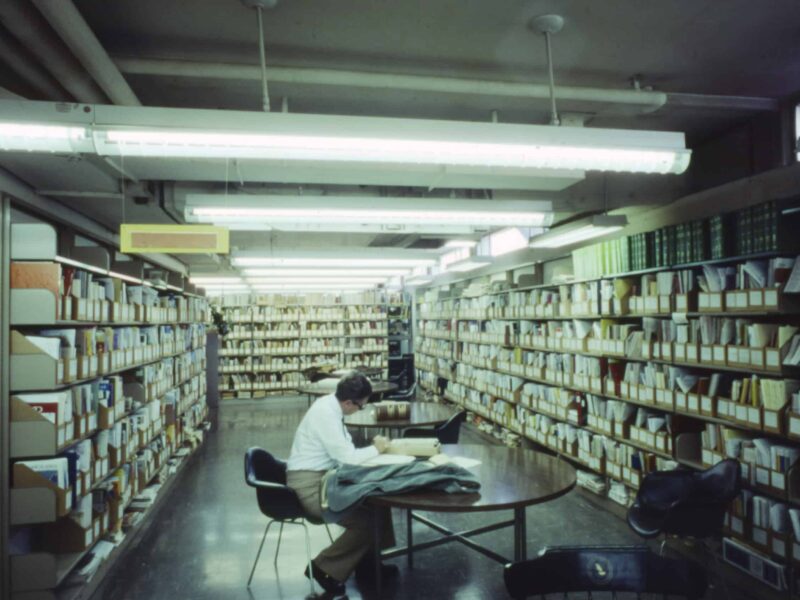
1969
Common Library opens at CDSP
GTU's Common Library opens in Church Divinity School of the Pacific's basement. Initially, the library combined books and journals from some member schools in a single location. Unfortunately, different cataloging systems were used by the different seminaries, creating a cataloger's challenge. Ultimately, all books were catalogued under the Library of Congress classification, used by nearly all research and academic institutions.
"Moving from the Bibliographical Center to a common library was the boldest and most visible event in GTU history. Shepherding these developments was the most exhilarating of the GTU experiences of my tenure…Buying as one entity for some thirty-five years, ending needless duplication with a combined budget, made it possible to fill in gaps and extend research developments. Cooperative planning with the University (UCB) also picked up speed." - John Dillenberger, From Fallow Fields to Hallowed Halls: A Theologian's Journey, 2005, pg. 117
1969
“‘Multiple Realities’ and its Implications for the Ethical Province of Meaning: A Study of Alfred Schutz” Ph.D. dissertation by Walter Dwight Oberholtzer, Jr.
1969
“Protestantism and Social Change: A Study of Religion in Central Contra Costa County, California” Ph.D. Dissertation by Owen Dale Owens
1873
Education in Berkeley begins to grow with opening of university and church schools
University of California opens in Berkeley in 1873, a merger of a private college started by Protestant ministers in Oakland and plans for a state mining and agricultural school. A variety of church schools and seminaries were founded or moved to Berkeley to use the resources of the university. The Baptist school sent students there to learn Japanese, prior to becoming missionaries.
“Beginning with the establishment of Congregationalist and Catholic parishes in the 1870’s, Berkeley had by the early 1900s become a proud city of churches. A strong current of Protestant morality affected public policies, from the prohibition of alcoholic beverages to the fight against political corruption. The city was also the location of several church schools…” - Charles Wollenberg, Berkeley: A City in History, 2008, p 65-66
1900
North Berkeley settled as Daley’s Scenic Park
In the late 19th century, the area that became Holy Hill was called Daley's Scenic Park and promoted as “Beautiful Berkeley.” A banker, Frank M. Wilson, purchased the development. He built and moved into a brown shingle, carriage house in 1894 at 2400 Ridge Road, the present site of the Flora Lamson Hewlett Library.

1923
Holy Hill rises after north Berkeley burns
Most of the buildings north of Ridge Road (more than 550 structures) burned in a great conflagration on September 17, 1923. The wind changed, sparing 2400 Ridge Road. Amazingly, no one died. In rebuilding the area, which had included many fraternities and sororities, Bay Area seminaries purchased property in order to be closer to the university and to each other. Later in the 1960s, university student chapters, with the exception of a few cooperatives, moved to the south side of the campus.
1958
Cooperative graduate program proposed
The Interseminary Committee consisting of members from Berkeley Baptist Divinity School, Pacific Lutheran Theological Seminary, Pacific School of Religion, and Church Divinity School of the Pacific, and led by Dean Sherman E. Johnson of CDSP, proposed a cooperative graduate program in religion to the University of California, but the initial responses were inconclusive. San Francisco Theological Seminary joined the discussion in 1959 when Pacific School of Religion invited the other schools to participate in a special PSR department in graduate studies. At the time, PSR and SFTS were the only schools that offered ThD degrees.

1970
Office of Women’s Affairs opens
The Center was founded in 1970 as the Office of Women's Affairs by women who recognized "that seminary women at the GTU schools needed a channel, an advocate, an office through which to express their needs and concerns." The name was changed in 1977 to Center for Women and Religion. The Center worked toward the goal of ending sexism and promoting justice in and through religion focusing on research, the status of women in religious structures, and community building for women. Activities included offering GTU courses, sponsorship of conferences, programs, and groups, and the publication of anthologies, bibliographies, a journal, and newsletters.
“Our context as a Center for Women and Religion in the midst of nine traditional theological institutions gives us a unique opportunity to see the effects of women’s exclusion from theological culture. We see how the exclusion of women from leadership and theological education results in the elimination of women as shapers of official theological culture.– Sandra Yarlott, CWR Director, 1986
1970
Guild publishes Story of GTU and its member schools and Centers
"The fascinating story of the growth and progress toward mutual understanding," along with narratives of each member school and center, is published by the Guild in this 59 page booklet: Graduate Theological Union: Its Participants and Ecclesiastical History.
1970
GTU establishes eight suggested Areas of Study for Ph.D. and ThD degrees
GTU establishes eight suggested Areas of Study for Ph.D. and ThD degrees: Biblical Studies, Historical Studies, Theological Studies, Religion and Society, Religion and the Personality Sciences, Theology and Education, Theology and the Arts, and History and the Phenomenology of Religion. These Areas could be combined by students for a specific subject with appropriate approvals.
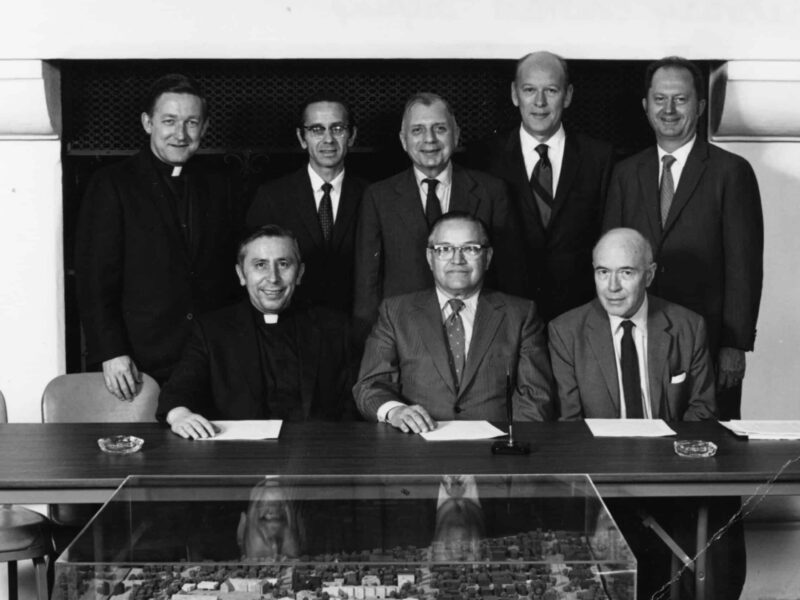
1971
Common Library Agreement signed
The Common Library Agreement marks the next phase of shared library services. Seven member schools and the GTU were signers of the Common Library Agreement in 1971. PSR joined the common library agreement in 1980, after the completion of the first two levels of the library, and SKSM in 1982.
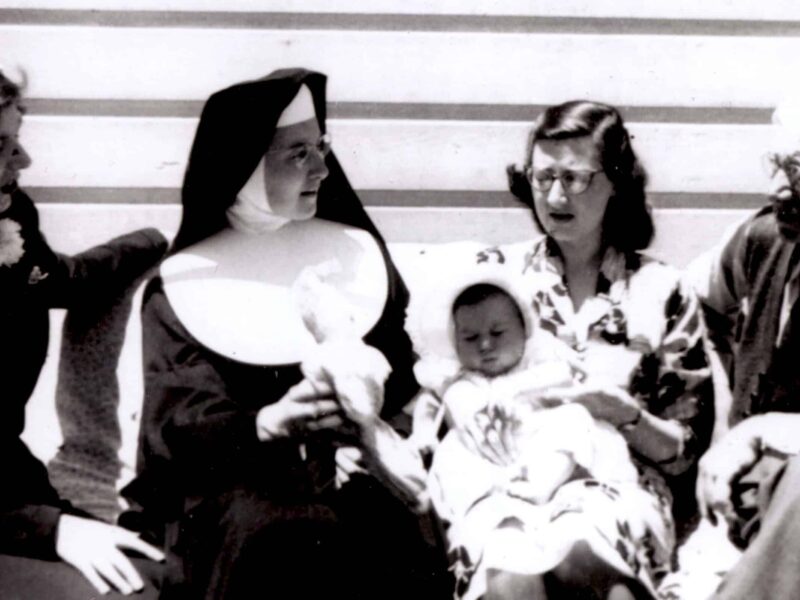
1971
First full-time woman professor hired
In 1971 , Dody H. Donnelly (1920 - 2013), then Sister Gertrude Joseph Donnelly, became the first full time woman professor at Jesuit School of Theology in Berkeley and the Graduate Theological Union. In 1968, working towards a Th.D. at PSR, she received considerable press as the first Catholic nun to live on campus at a Protestant seminary. Donnelly grew up in San Francisco where she attended Ecole Notre Dame des Victoires (secondary school). After graduation in 1938, she joined the Sisters of Saint Joseph of Orange as Sister Gertrude Joseph Donnelly. She received an AB in English Literature, Dominican College of San Raphael (1950); MA and Ph.D. in the classics, Catholic University of America (1962); Fulbright Scholarship, American Academy, Rome, Italy (1962); and Th.D., Pacific School of Religion (1973).

1971
Claude R. Welch, Dean 1971-87, President 1971-82
Claude R., Welch (1922-2009) began his term as dean in August of 1971 following a stint by J. Hilary Martin of CDSP as Acting Dean (1970-71). In December, he also became president, a role in which he served until June 1, 1982. Welch continued as dean until 1987. He contributed to the expansion of GTU’s programs and services, notably the academic ties between the GTU and the UC-Berkeley, including the joint Ph.D. in Near Eastern Studies and cross-registration for courses. He oversaw the admission of affiliated centers, institutes, and programs such as the Patriarch Athenagoras Orthodox Institute; Center for Theology and the Natural Sciences; Institute of Buddhist Studies; Pacific Asian-American Center for Theology and Strategies; and the Center for Ethics and Social Policy. He secured permits and plans for the GTU Common Library building and completion of Phase I in 1981.
“The GTU is at root a venture in faith: faith in one another, faith in the future, and faith in God. The GTU is a unique community, formed from a series of covenants, agreements and contracts. Remarkable things have happened in the GTU, there is much unfinished business underway, and there are possibilities as yet unexplored.” - Claude Welch, Annual Report of the Dean & President to the Board of Trustees, September 15, 1973
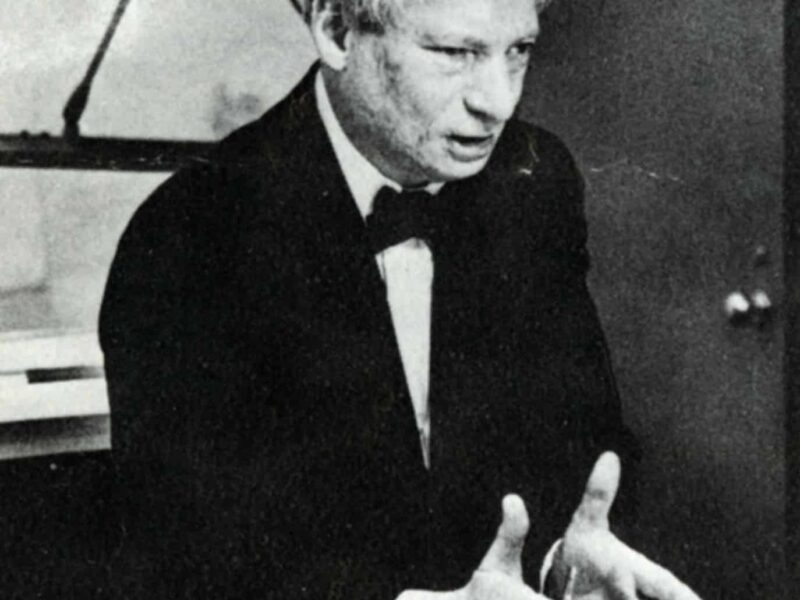
1972
Kahn selected as architect for library
Louis I. Kahn is selected from 18 architects to design library. The site at 2400 Ridge Road was purchased from BTS and SFTS for the building. His initial design is of a building with a form like a ziggurat and filled with light for reading. Kahn died in 1976. Two local architectural firms familar with Kahn's work finished the project: Peters Clayberg and Caulfield and Esherick Homsey Dodge and Davis.
"I turn to Light, the giver of all presences. By will. By law. You can say the light, the giver of all presences, is the maker of a material, and the material was made to cast a shadow, and the shadow belongs to the light." - Louis I. Kahn
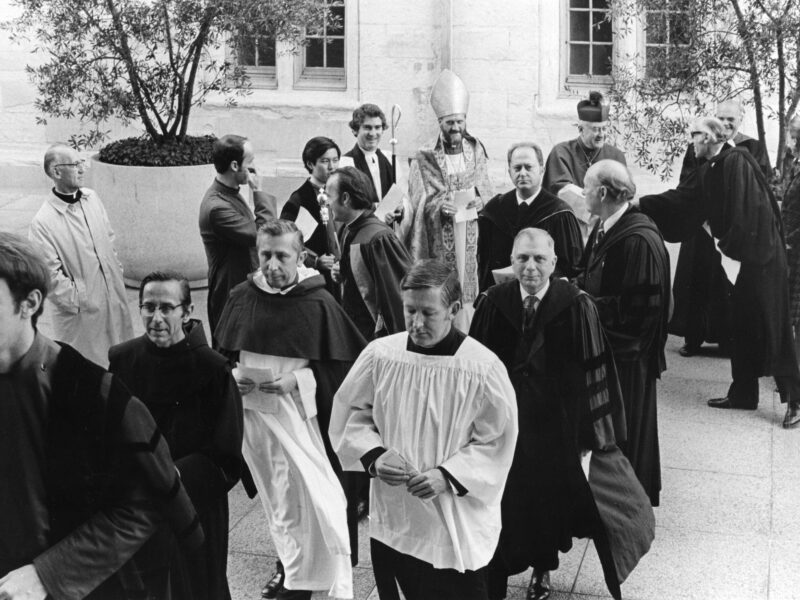
1972
10th anniversary celebrated
GTU’s 10th anniversary was recognized by a special edition of The Catholic Voice, Diocese of Oakland, November 2. The school held its anniversary celebration at Grace Cathedral in San Francisco, January 1973.
"But most of all, this is a story of the Church of tomorrow because the GTU students of today are the men and women who will be the leaders of that Church. As Dr. Welch states in his article on page 20, no one knows where the spirit will lead us, but may it not be said that the spirituality, scholarship, and ecumenical spirit generated by the GTU will be a decisive factor in helping reform and renew the Church to be more unified and responsive to God's call and human need." - Msrg. Francis A Maurovich, Editor, The Catholic Voice
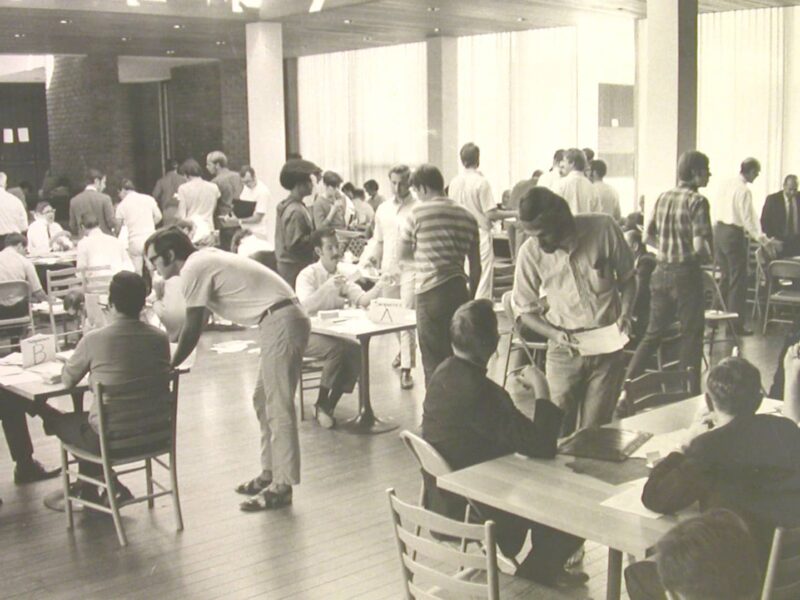
1973
Increased partnership with UC Berkeley
GTU students could cross-register at UC Berkeley at no additional charge. Up to this point, university faculty regularly sat on students' doctoral committees and prospective Ph.D. students also had to be admitted into the university's graduate division.
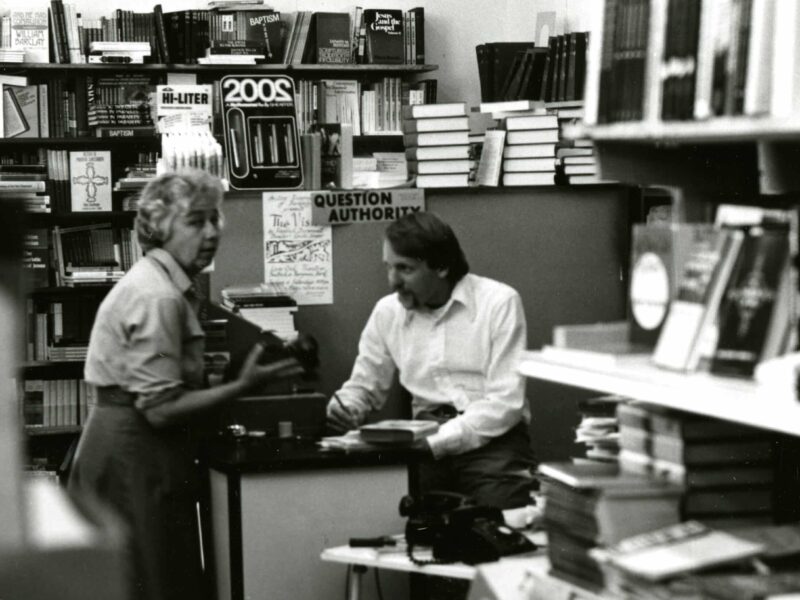
1973
GTU opens bookstore
The GTU opens a combined bookstore at 2465 Le Conte Ave. to consolidate stores from most of the member schools. Over its 35 years, it became known as one of the finest theological bookstores in the country. It was a gathering place for students, faculty, and alumni, as well as with the Berkeley community. Closed in 2008, the space became CARe's Doug Adams Gallery for a few year in 2016.
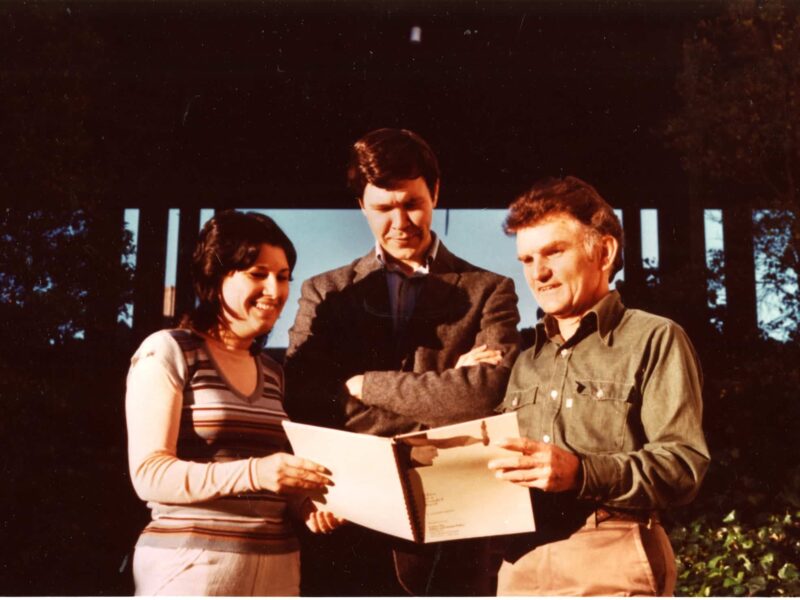
1974
The Center for Ethics and Social Policy founded
Faculty from GTU and UCB founded the Center for Ethics and Social Policy to explore new approaches to bring together resources from the social sciences, public policy makers, and theological ethics to focus on vital social policy issues. Important participants included Charles McCoy, Mark Juergensmeyer, Fred Twining, and Robert N. Bellah. The Center offered courses in the GTU curriculum, held seminars, lectures, and conferences, conducted special projects, supervised interns, and published a newsletter, occasional papers, and books. It closed in 2002.
1976
Annual Faculty Lecture established
The Annual Faculty Lecture was "established by the GTU to honor distinguished scholars on the faculty, and to allow the community an opportunity to hear the results of their scholarship." The lecturer is to embody the ecumenical spirit of the GTU in writing and teaching. The name was changed to the Distinguished Faculty Lecture in 1988.
1976
Patriarch Athenagoras Orthodox Institute joins the consortium as an affiliate
The Patriarch Athenagoras Orthodox Institute becomes an affilate with GTU. The Institute's mission is to educate, communicate, promote and sustain the traditions, values, teachings and culture of Orthodox Christianity.
1976
“Practical Mysticism: The Psychosocial Dynamics of Change in the Mystical Tradition, Christian and Zen Buddhist” Ph.D. Dissertation by Francis James McGuire
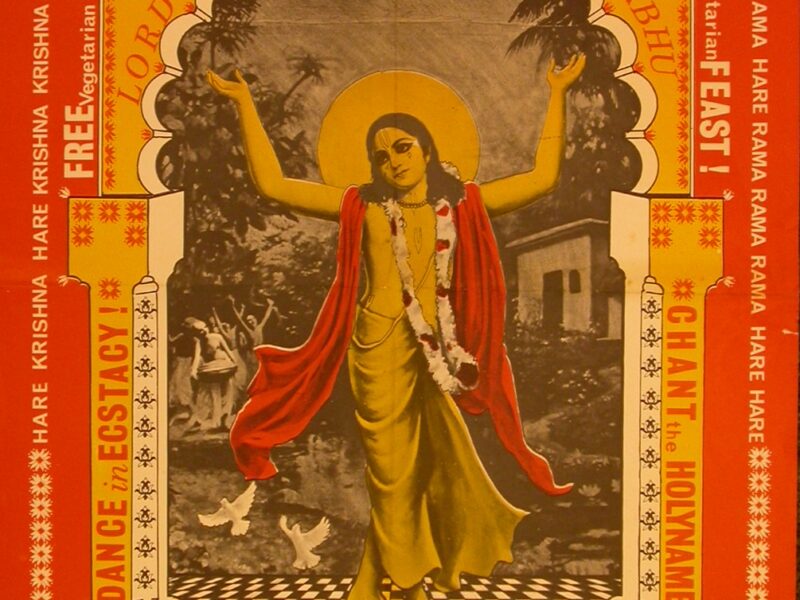
1977
New Religious Movements studied
A Program for the Study of New Religious Movements began in June. Concerned about their effect on American culture, the Rockefeller Foundation funded a conference in Berkeley, leading to a book, Understanding New Religions (1978), edited by Jacob Needleman and George Baker. In the next phase, 1980-83, the Program became the Center for the Study of New Religious Movements. Scholars produced working papers on: 1. Coercion and authority (brainwashing and deprogramming); 2. New religious movements' impact on social values and education; and 3. Legal issues: economic, political, and public policy implications. After fulfilling the terms of the NEH and Rockefeller Foundation grants, the Center closed in 1983.
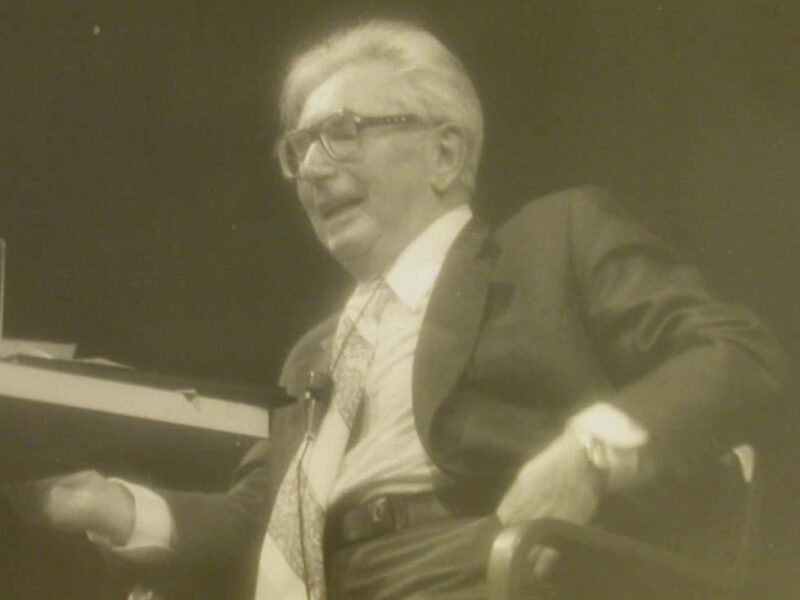
1977
Frankl Library inaugurated
In 1977, the Viktor E. Frankl Library and Memorabilia was inaugurated at GTU with Robert C. Leslie as curator. The special collection was established to contain all of Frankl's writings and include all known books and articles about the psychotherapist and logotherapy. Frankl (1905-1997), a Jewish psychiatrist and neurologist, survived four concentration camps and founded the third Viennese school of psychotherapy. His emphasis on meaning of life and social responsibility, along with acceptance of a spiritual reality, provided a sympathetic theory for teachers of pastoral counseling.
1977
“The Cult of Liberation: The Berkeley Free Church and the Radical Church Movement, 1967-1972” Ph.D. Dissertation by Harlan Douglas Anthony Stelmach
1978
“Asherah and Astarte in the Old Testament and Ugaritic Literatures” Ph.D. Dissertation by Alice Lenore Perlman
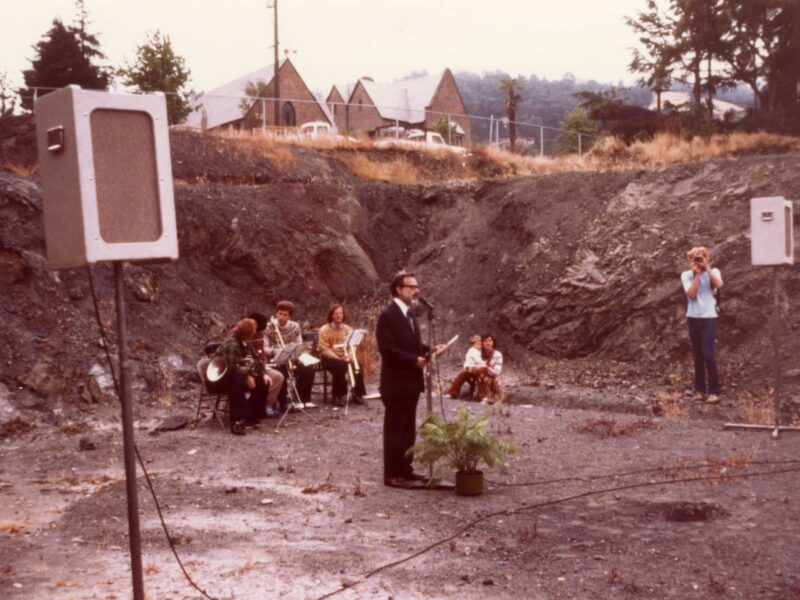
1979
Ground is broken for new library building
"Let this Common Library be always a place where Your Glory will dwell," Patrick LaBelle, O.P., prayed at the groundbreaking ceremony for Phase 1 of the building on June 24, 1979. The Board of Trustees decided to split the construction of the library into two phases. Phase 1 built the mechanical and storage for the facility and one level for the library and staff. Phase 2 added another library floor and a floor for administration.
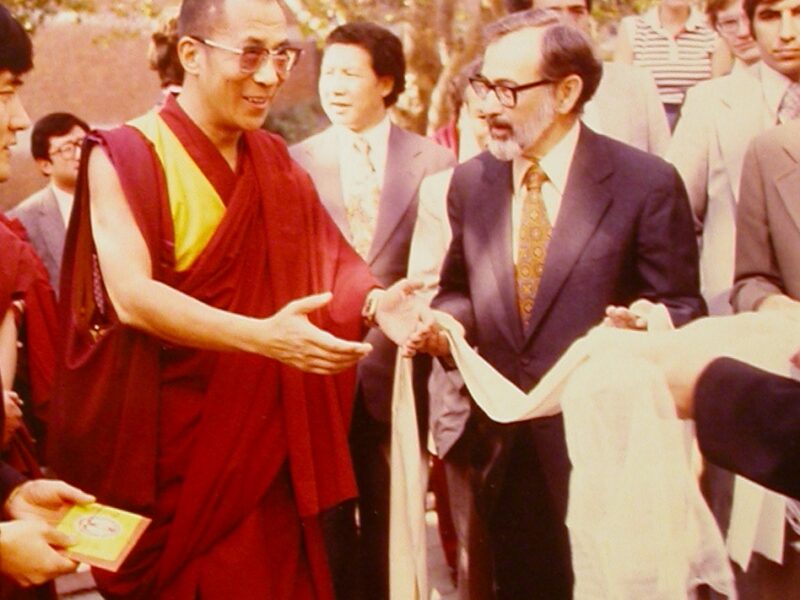
1979
Dalai Lama visits
His Holiness the Dalai Lama Tenzin Gyatso meets with President Claude Welch and others on his first visit to the United States in October 1979.
1980
“Feminist Liberation Theology: The Development of Method in Construction” Ph.D. Dissertation by Mary Elizabeth Hunt
Abstract: Developments in theological method arise from the changing perception of the theologians' task and the changing composition of those who 'do' theology. Feminist Liberation theology results when the insights of Feminist and Liberation theologians are synthesized and incorporated such that the discipline as a whole is renewed. They were chosen for this study as examples of constructive theology offered by heretofore marginated people. The theocultural background reveals that all theologies emerge out of concrete conditions as partial, limited and contextual expressions. Theologies are useful in specific situations to bring about the preconditons for the possibility of the reign of God. Presuppositions ground every method. They affect content and are in dialectical relationship with the method. Four presuppositions ground Feminist Liberation theology: (1) forgiveness is possible; (2) hope is warranted; (3) courage to act justly is expected; (4) starting point is with the struggling poor. These emerge in tension with Christian faith but are not meant to limit the method to persons who share the presuppositions. Feminist theology is illuminated by an understanding of the historical and contemporary oppression of women and by strategies to overcome it. Feminists challenge theology to consider individual experience. They invite the continual expansion of consciousness so that racism, classism, imperialism, etc. can be seen as aspects of an interstructured analysis. Latin American Liberation theology is an indigenous response to situations of conflict which result from systemic poverty. It is based in praxis and makes extensive use of the social sciences. Liberation theologians articulate the urgent struggle to make sense of God in the midst of suffering. They subject everything, including Scripture, to a "hermeneutics of suspicion." Comparison of the two methods yields a common element, namely, their mutual challenge to the notion of 'universal' in theology. What was previously considered universal came from the limited experience of the theologian. Now 'universal' requires that as many perspectives as possible be brought to bear on issues. This ever expanding base needs a method to prevent it from being chaotic. Method is a set of parameters within which to theologize communally. It is a framework for creative reflection and structured praxis. Contemporary constructive theology as articulated by Bernard Lonergan, Bernard Meland, Gordon Kaufman and David Tracy provides the components of Feminist Liberation theology: Experience, Culture, Mystery and Tradition. Together these elements result in personal conversion and structural change. A method adequate for contemporary theology must be pluralistic, ecumenical, eschatological, historical and pastoral. The adequacy of Feminist Liberation theology must be measured in concrete situations. Hence the study concludes with the method in action academically in case of God-language and pastorally in the case of the death penalty. The method is intended to focus discussion not provide preprogrammed answers. It is meant for use by professional theologians in their task as facilitators and chroniclers of communal quests to live faithfully. It is meant for use by nonprofessionals who can now claim their theological birthright. Feminist Liberation theology is being refined in academic and pastoral application. It is intentionally provisional, designed as a model which will facilitate sharing. It is a step toward transforming theology into 'theopraxis.' Ultimately its adequacy will be judged by how it enhances the God-human-world relationship.
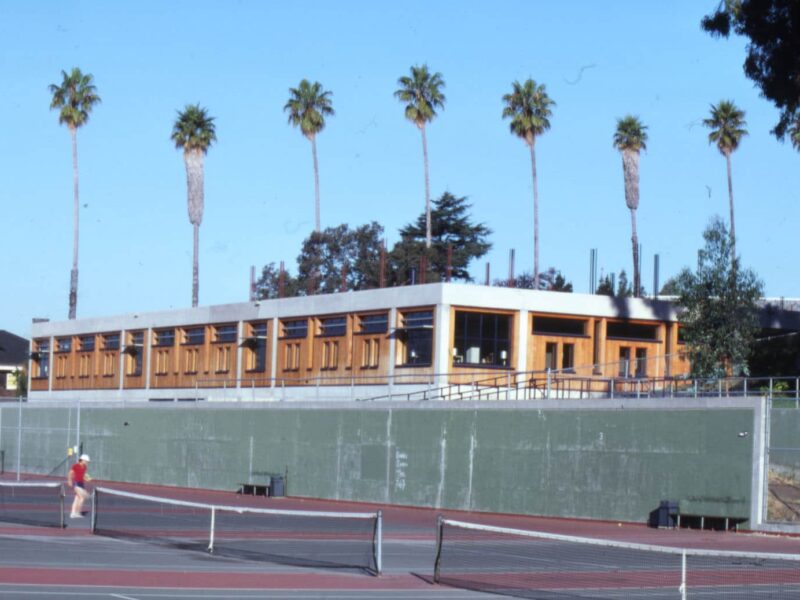
1981
Library officially opens
The library officially opened on May 1. The dedication was a celebration of libraries and risk takers.
"During the dedication, Rabbi Joseph Asher, a survivor of the Holocaust, spoke of the Library as 'our collective memory,' saying: 'That is what libraries are for. Not to store only certain books and ban others, but to teach us to judge between them...We must remember and record everything, and look at the memory and the record. We must remember the lies, so that we can unmask them. And we must remember truth so that we can enlarge on it.' Bringing together many different traditions and scholars, 'Whatever the differences and varieties of their sponsoring bodies, these people together stand committed to excellence in scholarship--meaning rigorous inquiry, research, reflection, and teaching. Nothing could demonstrate that concern better than this joint library, where they now have comingled their academic lifeblood.'" - Introduction, Berkeley's Academic Risk Takers: The Graduate Theological Union, Slide Show

1982
Michael J. Blecker, O.S.B., President 1982-87
Michael J. Blecker, O.S.B. oversaw the completion of the Flora Lamson Hewlett Library, installation of a Chair for Jewish Studies, affiliation with the Institute for Buddhist Studies, and establishment of the Inter-Racial and Cross-Cultural Education program. A keen fundraiser, he developed some of the first systematic attempts to raise money for the school.

1982
Center for Theology and the Natural Sciences founded as consortial affilate
When Robert Russell wanted to found a locus for discussion on the interrelationship between religion and science, the climate of the GTU provided the ideal location. CTNS was founded as an affiliate. Over the years, in the US and internationally, the Center has promoted the creative mutual interaction between theology and the natural sciences through research, teaching, conferences, and public service. In 2022, the Center was awarded a grant to study Virtue in Artificial Intelligence.
1982
The First 20 Years: A History of the Graduate Theological Union 1962-1982 published
"In twenty years, the GTU has become the major theological center in the western United States, and the variety of religious traditions represented in the union make it a uniquely diversified ecumenical center, one of the most inclusive in the world. Its library constitutes one of the largest theological collections in the nation." - Introduction, The First 20 Years: A History of the Graduate Theological Union 1962-1982, 1982
1983
“Conflict and Resolution in Hindu Guruship: The Tantric Guruship of Sita Ram Pandey (India)” Ph.D. Dissertation by Gar Emerson Kellom
Abstract: The subject of this dissertation is Hindu Tantric Guruship in Modern India, a rapidly changing religious phenomenon with implications not only for the role of religious leadership in Indian Society but for Western Society as well. Although this subject has yet to be studied in sufficient depth, it is the object of this work to provide some background for understanding guruship in either cultural context. The approach taken in the following pages is to analyze Tantric Guruship from both a horizontal and a vertical dimension. The horizontal or historical/textual approach reveals that Tantric guruship is an amalgamation of the roles of the ancient priest and the ancient teacher as well as the medieval Tantric guru. Fourteen characteristics which are basic to Tantric gurus are identified, and when taken together form a picture of the ideal Tantric guru. Inherent in this picture, however, are tensions between these various roles and between Tantric and Vedic elements of Hinduism which cause conflict in modern guruship. The vertical or case study dimension of this dissertation is an analysis of the guruship of Sita Ram Pandey of Banaras who was propelled into guruship in 1975 and today claims over two thousand disciples. Data collected about Sita Ram over the past eight years is evaluated in terms of the fourteen basic characteristics. In about half of these categories Sita Ram adheres to what a Tantric guru is expected to be, but in the remaining half of the categories he has either been unsuccessful at resolving tensions inherent within Tantric guruship or for other reasons has created a guruship other than the ideal. The overall picture which emerges is of Tantric guruship in transition from a traditional role based on the scriptures to a role more affected by and more responsive to the modern world. The last chapter proposes two of the major reasons why this change is taking place: the organization of the guruship into a religious movement, and the effect of modernization in Indian society.
1984
“Protestant Work Among the Chinese in the San Francisco Bay Area, 1850-1920 (California)” Ph.D. Dissertation by Wesley Stephen Woo
Abstract: This is a study of Presbyterian, Congregational, Baptist, and Methodist work among the Chinese in the San Francisco Bay Area from the beginnings in the 1850s up to 1920. One chapter outlines a narrative history of this work. Other chapters analyze American Protestant motivations for engaging in this work, the nature of missionary organization and activities, and Chinese Christian organizations and activities. The study shows that American Protestant mission work among the Chinese in America was motivated by a perception of America as the exemplar and agent of God's coming Kingdom. American Protestants also thought that being Christian, American, and civilized were integrately related. Education, medical work, social services, rescue of Chinese prostitutes, and defending the Chinese against pervasive anti-Chinese agitation were characteristic evangelistic methods. The study concludes that American motivations and activities reflected a racist, nationalistic, and paternalistic worldview. Yet within this worldview, Protestant missionaries were staunch advocates for the Chinese and stood in contrast to anti-Chinese forces. The study also shows that the evangelization of China and the entire world served as the larger context for mission work with Chinese in America. This latter work was always viewed as foreign work and the workers were mostly former or future China missionaries. Even the defense of the Chinese against anti-Chinese agitation and legislation was seen largely in terms of potential impact on American missions in China. Chinese Christians themselves shared this concern for China's salvation. They concentrated much of their energy, funds, and human resources toward the Christianization of their homeland. Given the primary concern for China, the question of the assimilation and acculturation of the Chinese was irrelevant. Americans were concerned that the Chinese in America absorb and take on American values--for China's sake. They were not concerned about the incorporation of China into American society. Finally, the study shows that while missionary work was a failure in terms of the number of Chinese converts, it was successful with respect to Protestantism becoming a permanent, albeit statistically small, part of the life of Chinese in America. In addition, the few Chinese Christian converts, who were noted for their sincerity and depth of faith and commitment, formed their own para-church structure, the Youxue Zhengdaohui, within the larger American missionary structure. Besides functioning as a Chinese institution within the white church, this organization served as one of many social organizations within the overall Chinese social structure in America.
1984
Advanced Management Program Begins
From 1984 through 1988, the GTU offered an Advanced Management Program for senior executives in religious institutions. The program “aims to bring management and ministry together by providing the premier management training Program for executives and leaders of religious institutions no matter what their specific position or background. The emphasis is on excellence and education rather than on ‘business skill’ functions.” A certificate was provided after completion of an intensive four-week Monday-Friday course in the summer.
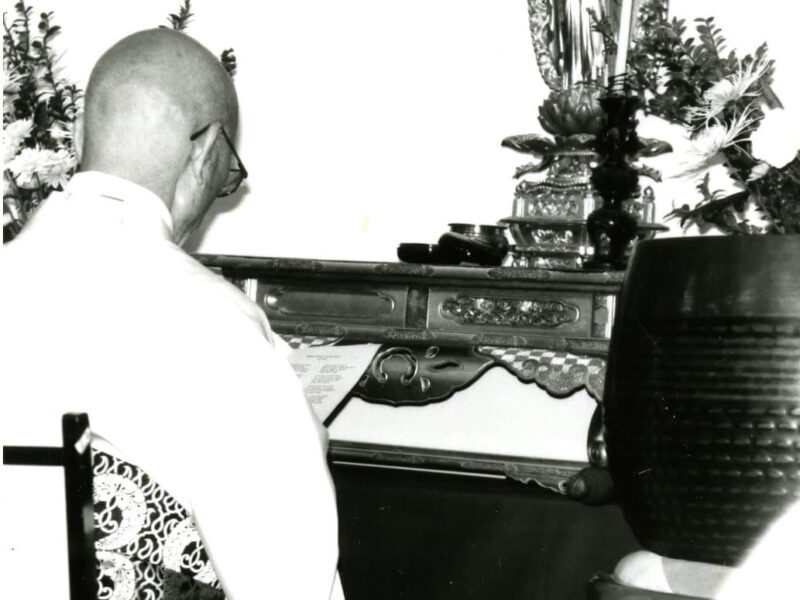
1985
Institute of Buddhist Studies becomes consortial affiliate
The Institute of Buddhist Studies (IBS) became an affiliate with the GTU. Established in 1949, the Institute provides graduate-level Buddhist education, ministerial and chaplaincy training, and other educational programs in the San Francisco Bay Area. Associated with the Buddhist Churches of America, the seminary and graduate school practices interreligious collaboration through its Master of Arts degree and lectures and programs that are open to all. IBS became a member school of the GTU in 2022.
1985
Students and faculty rally against Apartheid
More than 700 students faculty and staff from GTU join the rally against apartheid on April 24, 1985. Gathering at 2465 Le Conte Ave., they then march to Sproul Plaza at UC Berkeley.
1986
“Theology in the Age of Probable Reasoning” Th.D. Dissertation by Nancey C. Murphy
The present study attempts to show the value of recent philosophy of science for understanding and reforming theological method. It raises, and answers in the affirmative, the question whether theology is capable of measuring up to standards of scientific reasoning. In particular, it describes philosopher of science Imre Lakato's theory of scientific rationality, showing that his concept of a scientific research program is useful for reconstructing some of the history of theology. The example considered is that of the Roman Catholic modernist movement at the turn of the century. Furthermore, it is argued that Lakatos's standards for assessing research programs are as applicable to theology as they are to the natural sciences. Assessment of the scientific status of theological programs requires attention to the data upon which the programs are based. A variety of kinds of facts figure in the support of theological theories. However, a thesis of the present work is that church practices--especially those relating to discernment of God's action in human affairs--are important though neglected sources of data for scientific knowledge of God. Finally, the new "non-foundationalist" theologies of David Kelsey, Ronald Theimann, and others are explored, showing the compatibility between their work and the research programs approach advocated here.
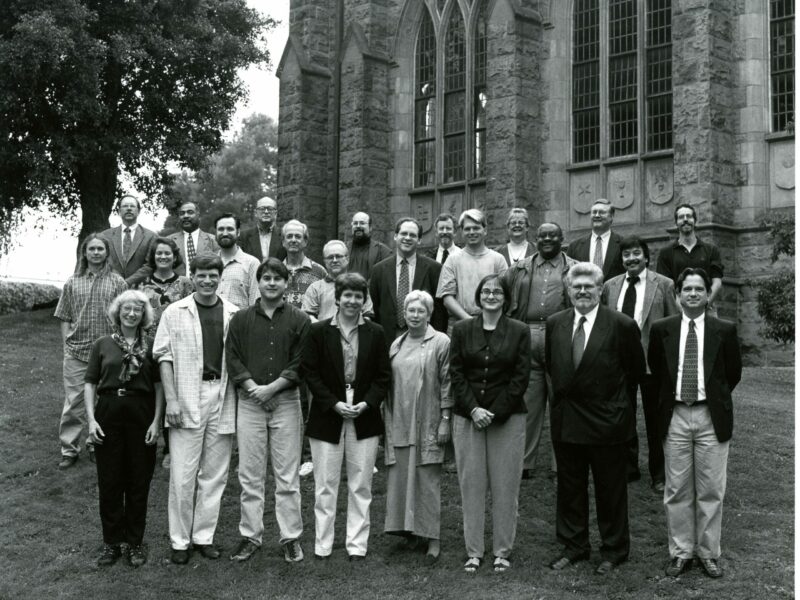
1987
Newhall Fellows established
Trustee Jane Newhall establishes the Newhall Fellows, an endowment enabling doctoral students to teach or conduct research with faculty mentors. Since 1995, more than 330 doctoral students have been Newhall Fellows and more than $1 million has been awarded. The students benefitting from this professional development opportunity have become some of GTU's most academically influential alums.
1987
Library completed and named Flora Lamson Hewlett Library
After decades of planning, collaboration, and construction, the Flora Lamson Hewlett Library dedication ceremony celebrated the completion of a centralized library that would serve the entire Graduate Theological Union consortium. Acknowledging with gratitude a substantial contribution from the Hewlett Foundation, the GTU Common Library was named the Flora Lamson Hewlett Library in May 1987.
"As Roger (Heynes) said she was a very religious person. And there were several things that she was interested in. One was the dedication and the belief that we had to have good schools of religion if we were to have good religion. She felt that was the real role for the seminary. The second was a belief in an ecumenical movement. She was strongly influenced by Vatican II. And she saw in the GTU, an opportunity to combine both of these. If you look at this organization, it is an impossible organization. How can you have 9 or 11 or how many different units get together who have different religious beliefs and make it go? It doesn’t work. There are all kinds of centrifugal forces. The one centralizing factor that she recognized was the library. The first place that each one of the religious groups, the denominations, had their own library, and by combining then you have a better unit. It formed a core operation for this very important ecumenical movement. So she saw, or foresaw as you wish, the real importance and vitality of a library here. So I am happy to accept this in her name." - William R. Hewlett, May 6, 1987
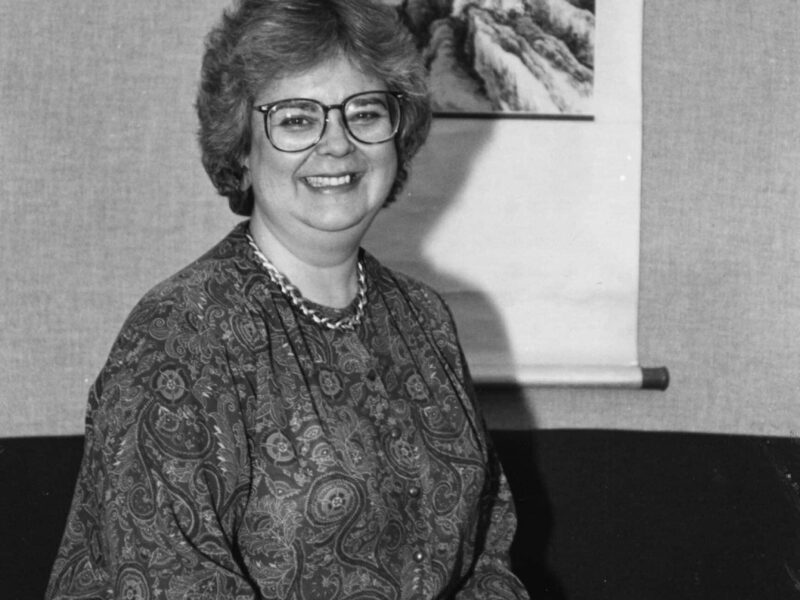
1987
Judith A. Berling, Dean 1987-96
Judith A.Berling was the GTU's first female administrator. She is internationally recognized as a scholar and teacher, intentionally cultivating interdisciplinary and interreligious encounters in her classroom and encouraging those throughout the GTU. Among her projects, Berling convened a working group of faculty to enrich the curriculum with Asian and Pacific Rim topics and perspectives — an emphasis that continues through the Asia Project.
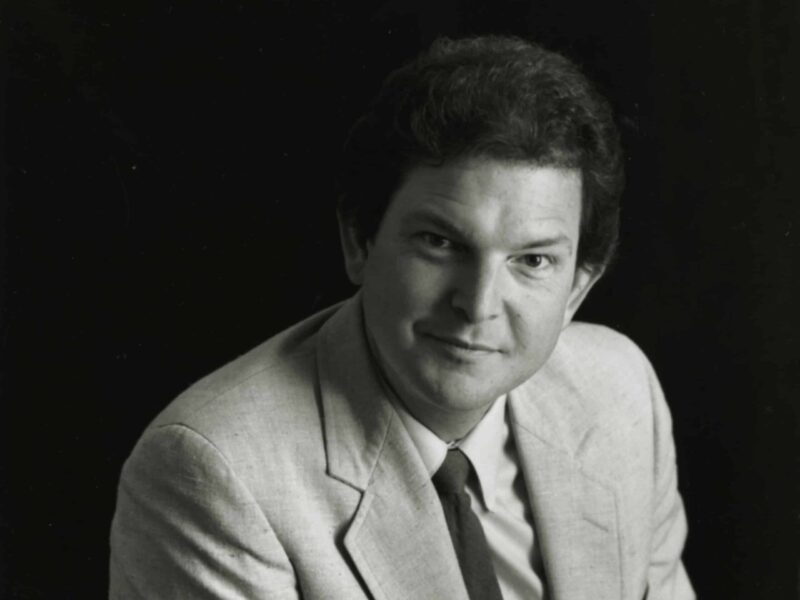
1987
Center for the Arts, Religion and Education founded
Doug Adams, Professor of Christianity and the Arts at the Pacific School of Religion, founded CARE (now CARe) in 1987 as an affiliate of the GTU. The Center promotes scholarship, reflection, and practice in the arts and religion to serve the GTU and to benefit the community. Its gallery shows, events, grants and fellowships have carried forward the positive, joyful energy of its founder, who died at 62 in 2007.
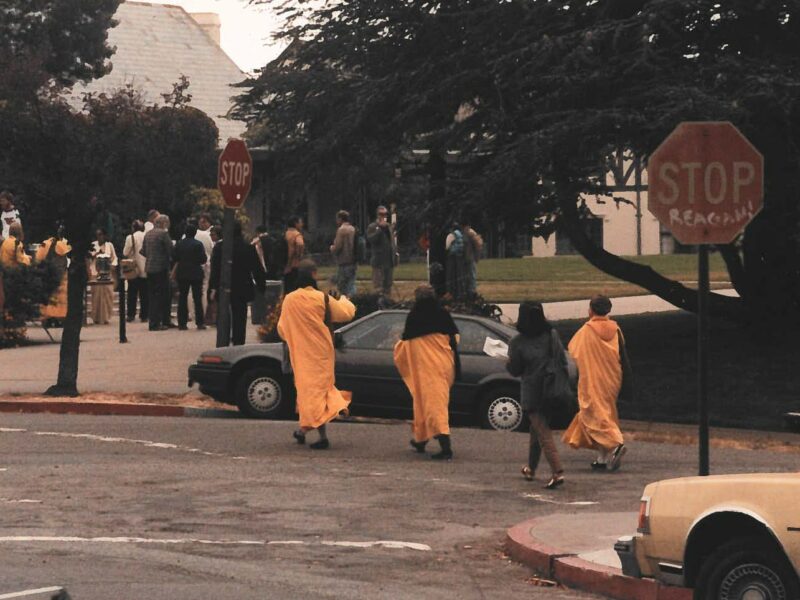
1987
Buddhism & Christian conference held
Buddhism & Christianity: Toward the Human Future conference was held August 10-14, 1987. More than 700 attended the conference, held to promote religious pluralism, producing a short video, a list of papers for purchase, and a book. Nicholas Grove commented in Mystics Quarterly, March 1988, on the exceptional speakers and that there "was a particular genius of this gathering. It was by no means uncommon to share breakfast with a Japanese Zen master, and end the evening with a celebration of ice cream and coffee with a lady who was both a New York school teacher and a Christian Zen practitioner."
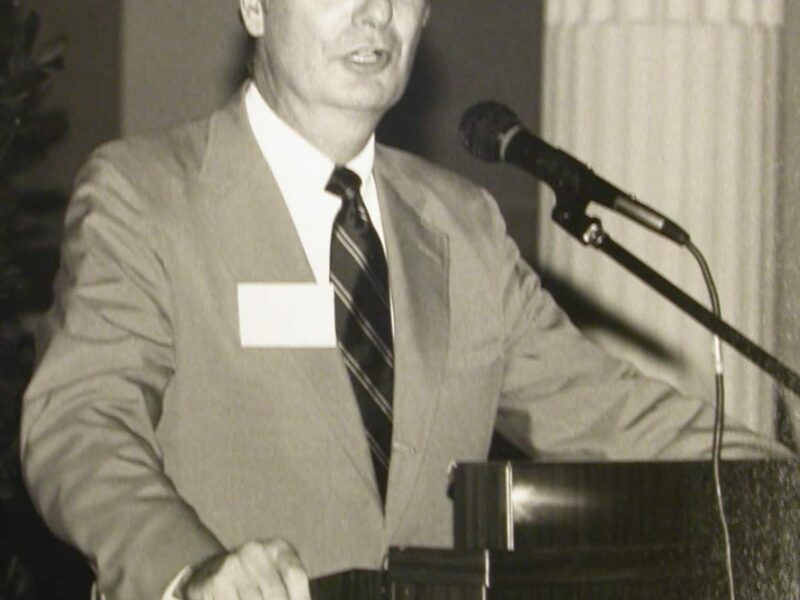
1988
Robert M. Barr, President 1988-92
“The GTU is indeed unique in this country. Nowhere else will you find the rich ecumenical representation of the faculty and scholars from a variety of denominations and the strength that we also gather because of our relationship with the University of California.” - Robert M. Barr
1988
Art Exhibits: Christo and Jean Claude
Douglas G. Adams introduced Christo at the opening of an art exhibit on April 15. Entitled "Christo and Peter Setz, The Running Fence Project Revisited," the exhibit featured Christo's plans for the "Umbrella Project," as well as images from "The Running Fence." The event combined a display of Christo's projects with the retirement of Peter Setz, founding director of the Berkeley Art Museum and a long time friend of GTU. Selz assisted Christo with the planning and implementation of "The Running Fence." The Library was conceived as a facility that would be open to the public for lectures, events and for the display of art, sculpture, rare books, and historical materials.
1989
Chan Prize begins
The Chan Essay Prize is an annual award ($2,500) funded by Lionel Chan Family Endowment. In even-numbered years, the topic is "Religion and Economics." In odd-numbered years, the topic is: "Identity and Practice across Religious Boundaries: exploring a particular concept, theme, or practice in two or more religions (e.g., Buddhism, Christianity, Hinduism, Islam, Judaism, etc.)."

1989
Pacific and Asian American Center for Theology and Strategies becomes affilate
Pacific and Asian American Center for Theology and Strategies, founded in 1972, becomes a consortial affiliate. The organization, influenced by liberation theology, focused on local as well as international issues regarding Asia and the Pacific Islands. Its mission statement: “Pacific and Asian American Center for Theology and Strategies is an ecumenical center for research, resourcing, recruiting, training, consciousness—raising the foci of the Pacific and Asian American constituencies to bring about the enrichment of existence and harmony wrought by Christ.” The Center closed in 2002. The Asia Project continues its work.
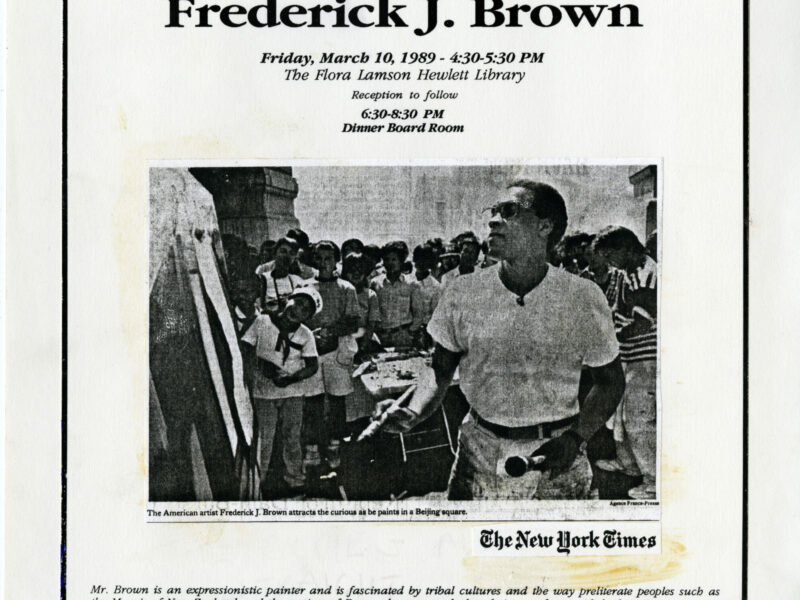
1989
GTU hosts National Conference of Black Seminarians
GTU hosts the 11th Annual National Conference of Black Seminarians. The theme is "Redefining Black Power through Church and Society.”
1989
“Crossing “Deep Rivers”: The liberation theology of Gustavo Gutierrez in light of the narrative poetics of Jose Maria Arguedas” Ph.D. Dissertation by Brett Eugene Greider.
Abstract: Peruvian novelist, poet, sociologist, and ethnologist Jose Maria Arguedas (1911-1969) wrote "trans-cultural" narratives and essays that had a significant impact on the development of Gustavo Gutierrez's liberation theology. Reading the deeply encoded pluricultural text requires investigation of the socio-literary context and cosmology of the indigenous peasant society of the Peruvian highlands. Arguedas' analysis of Highland cultures, the strategy of multiple layers of communication, and poetic presentation from within indigenous cultures make his novels significant as cultural texts. Folk arts and popular music, the "huayno" genre, form a musical text ringing with cultural realities. Arguedas' novels are deeply encoded with the Andean cosmovision, indigenous cultural myths and symbol systems, arising from his wealth of experience in the "pluricultural" South Andes which was once the center of Inca civilization. He was immersed in the conflictual socio-political world, its poverty and class stratification, as seen in his professional non-fiction writings as ethnologist and sociologist. The novels of Jose Maria Arguedas, particularly Deep Rivers, also demonstrate the way that fiction communicates the contours and textures of religious consciousness. The subtleties of religious thinking, the struggle to awaken the relation between faith and social context, are shown as a process of interaction between religious consciousness and human action. The fictive model of a religious mind, in its development of an authentic indigenous synthesis of cultural realities and faith in the Christian God, accurately narrates the process of developing a liberation theology. Gustavo Gutierrez examines theological aspects of Arguedas' work and reflects them in his writing. Arguedas' actual theology takes the form of the novel. His essays on ethnology, sociology and anthropology of the Andes enhance its explication. It may be read as a religious text out of which an indigenous theology finds expression.
1989
Archives/Institutional Records program begins
After years of discussion, the archives and institutional record management program began with Lucinda Glenn as a half-time archivist. Closets and file drawers with long forgotten records were cleaned and sent to Glenn for processing. The position was made full-time in 1994. By 2022, responsibilities include overseeing a sacred world art collection, managing 2500 linear feet of archival materials and records, and placing some of GTU’s collections online.
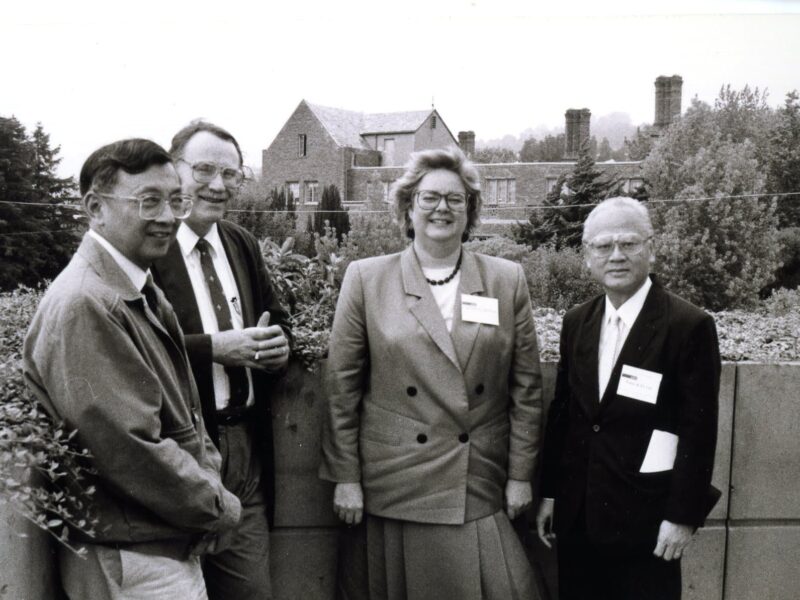
1991
The second International Confucian-Christian Conference held at GTU
The second International Confucian-Christian Conference took place at GTU July 7-14, 1991. The small but intense conference discussed eight areas including the problem of “dual identity”; the issue of modernization and tradition; and the question of the universal and the particular.
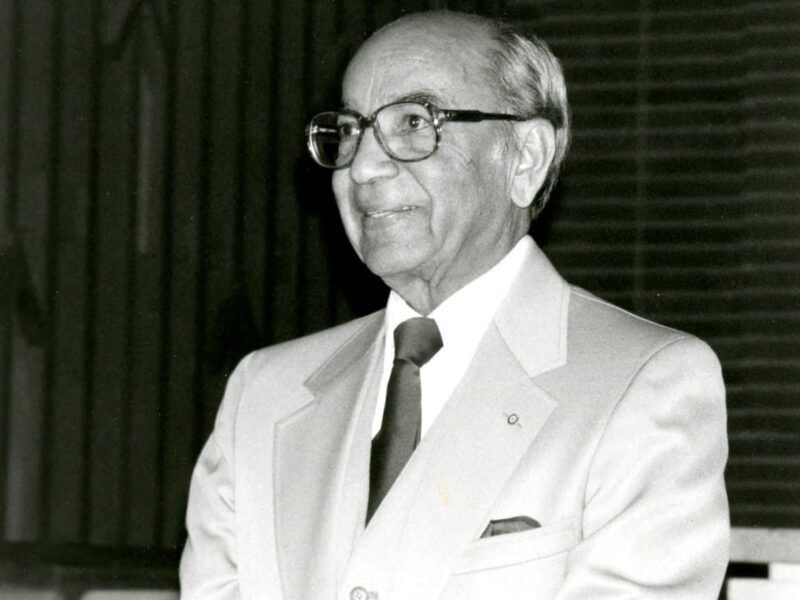
1991
Sujit Singh Lectures begin
The October 6, 1991, lecture by Surjit Singh on "The Telos of Religion and Culture: An Interpretation" marked the beginning of the annual Surjit Singh Lecture in Comparative Religious Thought and Culture. Born in Punjab, India, Surjit Singh was professor of Christian Philosophy at SFTS/GTU for many years.
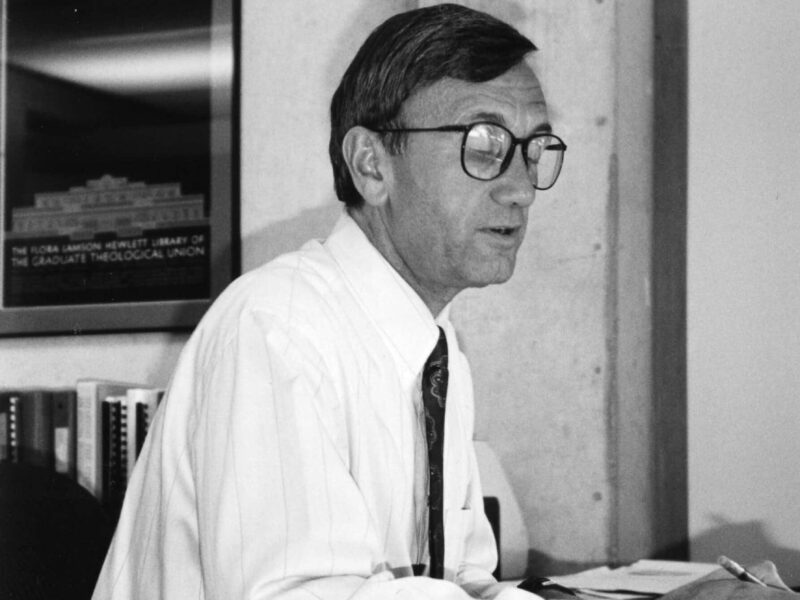
1992
Glenn R. Bucher, President 1992-99
Glenn R. Bucher understood that the GTU, entering into its fourth decade, needed to maintain its place in theological education and to work toward “ever greater achievements.” For GTU’s 30th anniversary events, he challenged the school to be more prominent and influential as a national and international center for theological study, and to be a greater resource for churches, synagogues and other religious communities. His work placed GTU on a better financial footing for the years ahead.
1992
“The photojournalism of the Vietnamese conflict as religious art” Ph.D. Dissertation by Jann Cather Weaver
Abstract: Using Paul Tillich's methods for discerning religious dimensions in visual art, the photojournalism of the Vietnamese Conflict is viewed as contemporary religious art. Tillich delineates two methods for discerning religious dimensions in art: four levels of relation between religion and art; five stylistic elements conveying religious dimensions. While not a systematic theological structure, Tillich's methods fall within an existentialist theological framework. His methods are rooted in his basic conviction of art visually conveying eschatological Hope and Possibility by giving aesthetic form to the most tragic and heinous. In response to critiques about Tillich's Platonic leanings, Tillich's methods are placed within a dialectical and continuous paradigm, permitting renewed application of his methods to contemporary visual art. Photojournalism, usually regarded as an objective medium, is inherently interpretive. Given this interpretive nature, pieces of photojournalism can embody the essential elements of visual art: aesthetics, composition, form, style, and transformation of the ordinary. In addition to Tillich's methods, a three-fold method of description used by Susan D. Moeller in Shooting War (Basic Books, 1989) is delineated: (1) Context: Historical, Political-Philosophical; (2) Photographer: Perception - Experience; (3) Photograph: Audience - Aesthetic of Truth. The methods of both Tillich and Moeller are first applied to non-photographic visual-art images of war: Francisco Goya's Los Desastres de la Guerra (1808-1823) and Pablo Picasso's Guernica (1937). These methods are then applied to four pieces of photojournalism from the Vietnamese Conflict to discern their religious dimensions: Malcolm Browne's 1963 photograph of Thich Quang Duc's self-immolation in Saigon; Eddie Adams' 1968 photograph of a summary execution by a South Vietnamese officer; Ronald Haeberle's 1968 photograph from the My Lai massacre; Huynh Cong Ut's 1972 photograph of South Vietnamese children fleeing their napalmed village. These photographs are then compared to Goya's and Picasso's visual-art images of war. Viewed in this methodological light, photojournalism serves as religious art, as well as theological text, for church and world. Secular photojournalism sets before the church a visual, historical, and theological conscience--and consciousness. The church sets before photojournalism a theological understanding of its critical role in a complex world.
1992
“Sanctification and self-cultivation: A study of Karl Barth and neo-Confucianism (Wang Yang-ming)” Ph.D. Dissertation by Heup Young Kim
Abstract: Despite their radically different orientations, Confucianism and Christianity have a point of convergence central to their interpretations, i.e., "how to be fully human." This focal point has produced distinctive but comparable doctrines, the Confucian teaching of self-cultivation and the Christian doctrine of sanctification. Hence, the thesis is that, in the light of paradigmatic teachings of Wang Yang-ming and Karl Barth, self-cultivation and sanctification are thickly resemblant views of a common issue, i.e., radical humanization. First, Wang and Barth made crucial paradigm changes for two converging goals: restating a unified foundation of faith and opening the dynamic possibility of human involvement. Taking one's commitment as the point of departure rather than a metaphysics or a philosophy of religion, both assert the unity of ontological knowledge and ethical practice. Secondly, Wang and Barth articulate the task in a similar structure. Establishing the root-paradigm of radical humanity (liang-chih, humanitas Christi) as the ontological reality, both define humanization as a process of realizing this transcendent reality beyond the ambiguous existential situation. Both believe that root paradigm gives concrete direction (Tao, Weisung) through the spiritual empowerment, fully revealing evil which has arisen by a dysfunction of the ontological reality. Thirdly, Wang and Barth present the same material definition of humanity (jen, imago Dei); namely, co-humanity or Mitmenschlichkeit. Understanding selfhood as a center of relationship, both advocate the concrete-universal way of its realization in an ever-expanding circle of human relatedness. These thick resemblances may have provided a basis for the success of the Korean Presbyterian mission. Hence, this dissertation suggests the following: the study of Confucianism as constitutive of doing East Asian theology; a task of East Asian theology as an a posteriori thematization for the communities of faith in the historic encounter; an appropriate scrutiny on the fusion of these two traditions by the relation of theology and confuciology, as thick-descriptive explications of each tradition; and a new paradigm of Christology, i.e., Confucian (Sage) Christology, which may overcome the problems of traditional Christologies with profound Confucian insights.
1993
Sacred Text Lecture begins
John Pairman Brown delivers the first annual Sacred Text Lecture on February 25, 1993: “What Makes a Text Sacred?” Each year since then, the library invites a speaker with a particular connection to a “sacred text,” written or oral, traditional or new, within a canon of scriptures or drawn from outside a religious tradition. The presentations provide fresh insights into the words that shape our sense of the sacred, ranging from Lincoln's second inaugural address to opera to El Teatro Campesino.
1993
San Jose Mercury News Features GTU in “The Face of Belief”
Tom McNichol's article on how GTU's students and instituions relate, begins: "On Common Ground: After centuries at war with one another, many faiths come together on Berkeley's Holy Hill..."
1993
“AIDS, the gay community, and the American Catholic Church” Ph.D. Dissertation by Richard Leslie Smith
Abstract: The construction of AIDS by the American Catholic bishops has been problematic for many Americans, activists and public health officials alike. The American bishops, while calling for a greater compassion and justice for people living with AIDS, have used this epidemic as an occasion to shore up a sexual ethic that is increasingly difficult for many American Catholics to accept. In so doing, they have set themselves at odds with what has become a legitimate and significant culture in the United States over the last few decades, namely, the gay community which has come to play such a pivotal role in the larger American discourse on AIDS. Indeed, the interaction between the bishops and the gay community has often revealed what John Courtney Murray once called "the structure of war", a matter of political maneuvers and clashing interests rather than genuine listening and respectful dialogue. This structure of war must give way to the structure of an orderly conversation. The bishops, from their side, must be willing to listen genuinely to the collective wisdom acquired by the gay community, even despite that community's difference of opinion regarding certain Catholic moral teachings. At the same time, gay leaders must be willing to let go of anti-Catholic bigotry and stereotypes and acknowledge the valuable contribution that Catholicism can offer the American discourse on AIDS, particularly its rich traditions regarding human community, social justice, and the meaning of human suffering. Central to this renewed conversation can be a significant number of Catholic AIDS ministers who are able to provide an important link between the gay community and the hierarchy by articulating the experiences of gay people with AIDS in traditionally Catholic terms. Central to it also must be the recognition by both communities of a larger American conspiracy, a larger moral universe capable of holding us all--with our diversity of unique cultures, our diverse values and symbols, and our varied ways of living and loving.
1993
“Contemporary native religious identity: The Indian Ecumenical Conference” Ph.D. Dissertation by James A. Treat.
Abstract: Religious life in many contemporary native communities in Canada and the United States is characterized by unusual forms of religious diversity, involving a variety of tribal traditions, intertribal groups, and denominational churches. During the 1960s a number of grassroots native religious leaders recognized the need for religious healing and revival in order to address the profound social crises affecting their communities; they called for an Indian Ecumenical Conference, which was organized by Robert Thomas, Ian MacKenzie and Wilfred Pelletier. Several hundred native people attended the Conference in 1970 at Crow Agency, Montana, and John Snow invited the group to meet a year later on the Stoney Reserve near Morley, Alberta. The Conference became an annual event and attracted hundreds of religious leaders and thousands of native people during the 1970s and 80s for week-long summer encampments focussed on affirming and strengthening native religious identity. The Indian Ecumenical Conference was an important new experience in the religious history of North America, and a multidisciplinary study of this interreligious, intertribal, religious movement facilitates an exploration of the dynamics of contemporary native religious identity. As a religious movement, the Conference promoted the revival of native religious traditions; religious revival is a product of both continuity and innovation and is rooted in the authenticity of personal religious experience. As an intertribal gathering, the Conference encouraged inclusive attitudes toward religious participation; religious adaptation in a complex and conflictual sociocultural milieu involves a strategic expansion of identities, not a substitution of one comprehensive identity for another. As an interreligious community, the Conference emphasized the shared religious heritage of native people; religious diversity should be viewed in terms of complementarity, and religious solidarity should be expressed through interreligious dialogue, cooperation and advocacy. Contemporary native religious identity is less a function of cultural phenomena described through social scientific methodologies, and more a product of shared interests and perceptions, networks of relationship, the ability to empathize, and an unusual combination of mutual respect and self-deprecating humor.
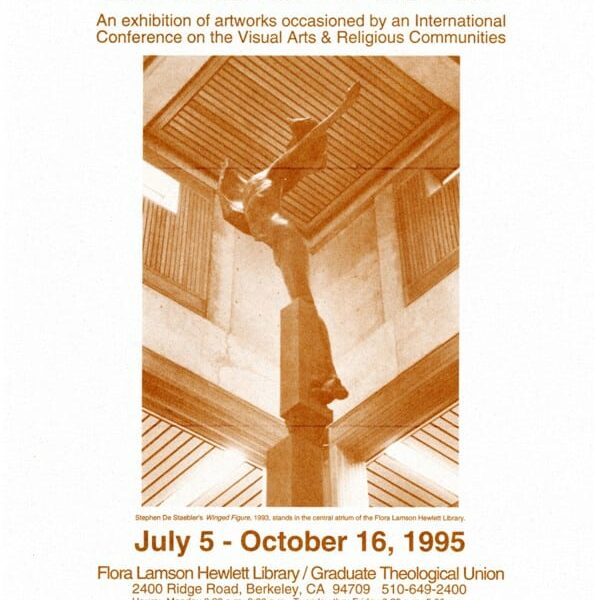
1995
New Perceptions of the Spirit exhibit opens
New Perceptions of the Spirit, an exhibit in conjunction with the International Conference on the Visual Arts and Religious Communities, opens on July 5, 1995.
"At the Graduate Theological Union, art is viewed as an expression of the spirit and integral to the life of the mind. The program of changing exhibitions keeps significant art daily before our community of scholars and those who visit the Flora Lamson Hewlett Library."
1995
“Religion at risk: Death and the sacred in AIDS community” Ph.D. Dissertation by Paul Anthony Schwartz.
Abstract: Drawing from interviews with individuals diagnosed with acquired immunodeficiency syndrome, service providers, and community activists in 1988, elements leading to the formation of an AIDS community in San Francisco are examined. Persons with AIDS are seen to be conversant with medical discourse about HIV disease, as required by their interactions with service providers. When reflecting upon the significance of their diagnoses, other forms of symbolic expression are employed, focusing on the realities of personal loss, grief and anticipated mortality. Many report episodes of personal transformation through religious involvement and a deepening of their practice of spirituality. AIDS is investigated as a threat to the moral order established by the decade of gay liberation activity following the Stonewall Inn riots in 1969. The symbolic expression of moral commitment, identity and moral agency before and after AIDS shifted from gay liberation to care, compassion and presence as moral ideals; the self as sexual actor gave way to an emphasis on the self as distinct from physical debility and suffering; individuals sought to balance anticipation of illness and death as inevitable realities with feelings of empowerment in taking responsibility for their own health care. Site visits to three organizations show the role of community-based understandings of HIV and AIDS as elements in the San Francisco model of AIDS care and its ethic of service. The Shanti Project trains volunteers for emotional and practical support required by diagnosed individuals. Coming Home Hospice provides palliative care for the dying, acknowledging the spiritual needs of patients and families. The Names Project and its emblematic AIDS Quilt serve a community need to publicly express grief and to memorialize the dead. The study concludes that the dual histories of gay liberation and AIDS can be accounted for in gay experience by the articulation of an erotics developed from the work of Georges Bataille. The function of eros is seen in enabling intimate communication of the realities of the inner life like sexual experience and death, in providing for the formation of a sacred nucleus at the heart of community life.
1995
“Women’s bodies, women’s blood: The politics of gender in rabbinic literature” Ph.D. Dissertation by Charlotte Fonrobert
Abstract: This dissertation argues for the importance of a feminist hermeneutics which refuses to submit to the dominant androcentric discourse of rabbinic literature. Analyzing the talmudic discussions of menstrual regulations (Niddah), it engages in readings of select texts which have as their goal to brush the androcentrism of the literature against the grain. In this, it takes issue with those feminist critics who have been content with a diagnosis of rabbinic culture as entirely patriarchal. Within these parameters this project pursues various approaches. One strategy is to search for and to analyze those moments where the androcentric perspective of the rabbinic discourse on female corporeality is ruptured. Employing methods of talmudic criticism I show that the Talmud produces a reading of the Mishnah which subverts the Mishnah's androcentric construction of the female body in primarily architectural terms. Instead, the Talmud can be shown to think about female bodies as sentient which prevents their complete objectification. This reading allows for an alternative reality to break into the one which the texts construct as the dominant one. The overarching goal of this project is to move away from a perspective which regards the rabbinic discourse on menstrual impurity exclusively as a product of patriarchalism and serving male interests only. In the context of the rabbinic project to preserve biblical Israel as a corporeal community, sustained by practices inscribed on gender-specific bodies, I argue that the discourse of gender has to be read in conjunction with the discourse of ethnicity. In this context it is then possible to think of women as having a positive investment in observing biblical traditions concerning menstrual regulations rather than merely being forced to do so. To strengthen this argument I use examples in rabbinic literature as well as the example of the Didascalia Apostolorum which presents the extensive and unique argument of the formerly Jewish women in the community for a practice of menstrual separation. Hence, the discourse on menstrual regulations may serve as a ground to rethink the relationship between the politics of gender and the politics of ethnicity, to rethink what is at stake for women in theorizing corporeality or identities of embodiment.
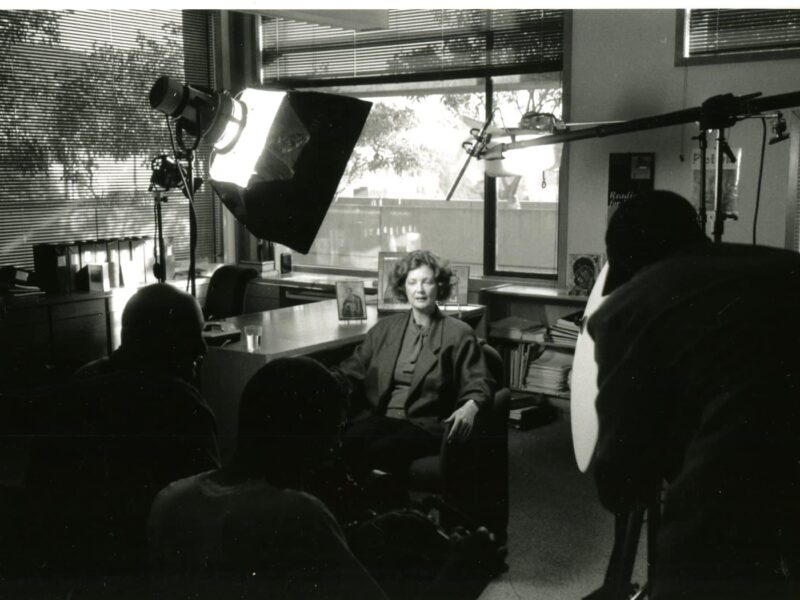
1996
Margaret R. Miles, Dean 1996-2001
Margaret R. Miles was appointed Dean in 1996. She received her B.A. and M.A. from San Francisco State University, and her Ph.D. from GTU ('77). She taught at the Harvard University Divinity School for 18 years, where she chaired the theology department (6 years) and the Committee on Religion, Gender, and Culture since its inception. She has lectured widely in the United States and Europe on patristic theology, asceticism, religion and art, gender theory, and film and literary criticism. She served on the editorial board of the Journal of the American Academy of Religion and the advisory board for Feminist Studies in Religion. As the wife of a Presbyterian minister, she followed her love of learning to become an influential professor and writer over a wide range of subjects, including a unique co-autobiography with Japanese exhibition specialist Hiroko Sakomura.
1998
“The Moral Vision of Cesar E. Chavez: An Examination of His Public Life from an Ethical Perspective” Ph.D. Dissertation by Frederick John Dalton
Abstract: Cesar E. Chavez was a national public figure recognized for his leadership of the United Farm Workers, the first farm labor union in the nation's history to obtain collective bargaining contracts with agricultural employers. During the three decades that Cesar Chavez led la causa, the farm worker struggle for justice, he was regarded by many as a moral leader and a national prophet of justice. This dissertation articulates the moral vision of Cesar E. Chavez by examining his public life as leader of la causa. The thesis of this dissertation is that the public life of Cesar E. Chavez embodies a distinctive moral vision originating in a particular social and religious way of life. I describe Cesar Chavez's moral vision as a liberative character ethics rooted in a Mexican American migrant farm worker experience. This dissertation elaborates Chavez's moral vision by examining his notions of the true, the good, and the beautiful; character and community; and normative criteria for judgement and action. The point of departure or locus of moral theological reflection of this dissertation is the Christian praxis of Cesar Chavez. The methodology of this project is inspired by U.S. Hispanic/Latino theological reflection. There is a remarkable correspondence between Cesar Chavez's experience of impoverishment and commitment to the liberation of the poor, interpreted in the light of faith, correspond to key methodological characteristics of liberative approaches to theology. By elaborating the moral vision of Cesar Chavez, this dissertation demonstrates how Chavez's conception of the good configures his understanding of character and virtue which in turn determines the personal and collective praxis of the union community through the primary action-guiding norm of nonviolence. Furthermore, this dissertation illustrates that Cesar Chavez's moral vision encompasses two schools of ethical thought which many ethicists consider to be at odds with one another: liberation ethics, which is often confined to the social realm, and the character/virtue ethics, which is often confined to the personal realm. Thus, Cesar Chavez's moral vision contributes to the ongoing conversation about the moral life.
1999
“Imago Dei/imago hominis: Interacting images of God and humanity in theology and in artificial intelligence” Ph.D. Dissertation by Noreen Herzfeld
What does it mean for something or someone to be created in one's own image? This dissertation examines this question from the viewpoint of the two fields of theology and artificial intelligence (AI). At the root of the fascination our current culture has with creating an image of ourselves, an imago hominis, in a intelligent computer, lies a continuing problematic of defining what it is we wish to image, in other words, what it means to be truly human. In the field of AI, the elusive concept of intelligence is used to describe what is essential in us rather than merely contingent, what distinguishes us from other animals and makes us the species we are. The same question, what it means to be truly human, has been approached in theology through the concept of the imago Dei, the image of God, in which, according to Genesis 1:26, humans were created. Interpretations of the imago Dei have varied; in the twentieth century we find that most interpretations fall into three categories: the substantive, which views this image as a property, most often identified with reason; the functional, which views the image of God as an action, specifically our exercise of dominion over the earth; and the relational, which sees God's image within the relationships we establish. These three interpretations are exemplified, respectively, in the work of Reinhold Niebuhr, Gerhard von Rad, and Karl Barth. These same three categories can be used to describe approaches to AI. Symbolicists such as Newell and Simon view intelligence as a property, held by the individual, and expressible as a set of rules and programs. A second, functional approach, views AI as merely a collection of techniques used to allow the computer to execute tasks normally done by human beings. A third stream in AI sees intelligence as best acquired and demonstrated in relationship. In both theology and AI, the functional and relational approaches are currently in the ascendancy. A relational view of the human person is supported not only by trends in current AI research, but also by the popular culture's depictions of AI in science fiction story and film, where intelligent computers are consistently portrayed in relational terms. The analogy between interpretations of the imago Dei and approaches to creating an imago hominis has significance for both fields. AI's support of a relational anthropology suggests the need for a corrective to the highly individual and personalized trajectory that has characterized American spirituality since the nineteen-sixties. Conversely, a relational interpretation of the imago Dei provides us with a plausible answer to the question of why AI remains of such interest to our culture, despite a history of minimal success.
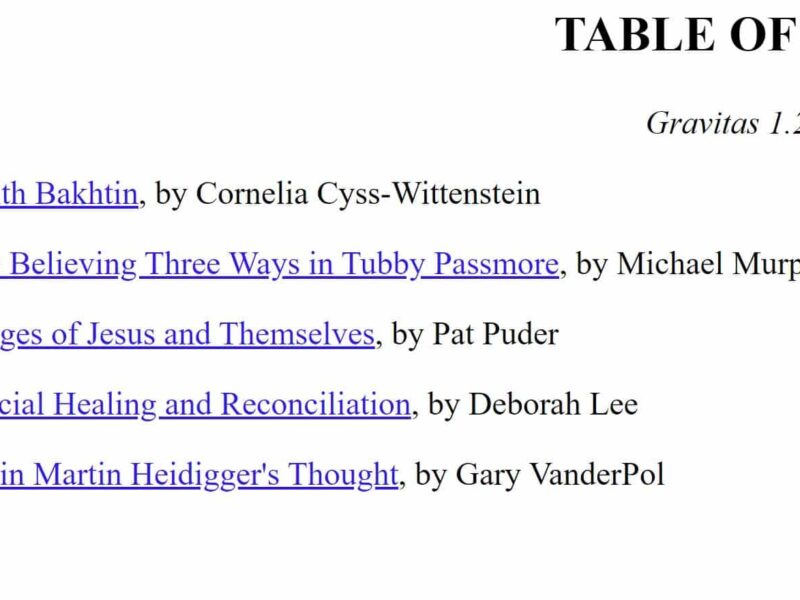
1999
Gravitas published, becomes first online journal at GTU
GTU's website, gtu.edu, first appeared in 1996 in advance of the release of Gravitas. The journal was published through Winter 2000.
“Welcome to the first issue of Gravitas, a new electronic journal of student scholarship at the Graduate Theological Union. Among these virtual pages, you will encounter new interpretations of Old and New Testament texts, an analysis of the religious dimensions of The X-Files, and a reading of the work of two of the most important liberation theologians writing today. You will also find reviews of cutting edge scholarly work on both Eastern and Western religious cultures.”

2000
James A Donahue, President 2000-2013
The first alum to serve as GTU president, Donahue was also Professor of Ethics. Before returning to the GTU, he served at Georgetown University for fifteen years as professor of theology and dean of students. In 1992, he was selected as the outstanding teacher of the year at Georgetown. Dr. Donahue completed a $12 million fundraising campaign in 2010 that raised more than $4 million for scholarships and established the Center for Islamic Studies.
2002
Arthur G. Holder, Dean 2002-2016
Arthur G. Holder, still active at GTU, was the longest serving Dean at GTU. He is a historian of Christian spirituality with particular interests in early medieval biblical interpretation, mysticism, and the writings of the Venerable Bede. A priest of the Episcopal Church, he was Professor and Academic Dean at the Church Divinity School of the Pacific before serving as Dean and Vice President of Academic Affairs for the Graduate Theological Union (2002-2016). In the American Academy of Religion he has been co-chair of the Christian Spirituality Group (2003-2008) and a member of the Theological Education Committee (2013-2016). He is an active member in the Society for the Study of Christian Spirituality, for which he served as President in 2009.
"A central facet of the GTU's mission is 'preparing women and men for vocations of ministry and scholarship.' So let's remember every day what those women and men will mean for the people in this world who need it most. Because of what we do here, hundreds of hospital patients will be comforted before and after surgery. Mourning families will be able to make it through times of loss and despair. Week by week, thousands of parishioners will be inspired to work for justice in their places of business and in their neighborhoods. Homeless people will find shelter, and hungry people will be fed. Young minds will be filled with wonder as they learn about philosophy and history and science and art. Music and poetry will touch the hearts of senior citizens and make them smile. Books will be written and speeches given to persuade our leaders to seek the ways of peace. Policies will be changed for the better, and churches, schools, and social service agencies all over the world will be more faithful to their calling—all because of what we do here every day." - Arthur G. Holder, 2002 GTU Convocation Address
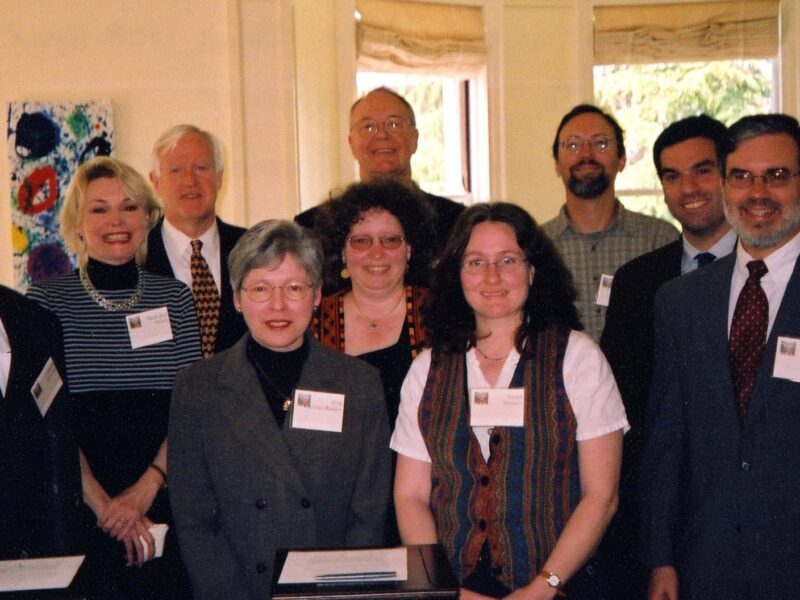
2003
Expanded Memorandum of Understanding between UCB and GTU signed
Memorandum of Understanding between UCB and GTU signed in April 2003 to endorse an expanded program of inter-institutional cooperation. Featured in the photograph: Front: Joseph Duggan, Associate Dean, UCB Graduate Division; Diane Hill, UCB Registrar; Naomi Seidman, Director, Center Jewish Studies; Arthur Holder, Dean, GTU. Middle: Mary Ann Mason, Dean, UCB Graduate Division; Carol Redmount, UCB faculty Near Eastern Studies; Joshua Holo, faculty, Center Jewish Studies Back: James A. Donahue, President, GTU; Robert M. Berdahl, Chancellor, UCB; Ronald Hendel, UCB faculty Near Eastern Studies.
“Whereas both campuses desire to enhance the already extensive and fruitful cooperation of faculty that has resulted in the growth of joint doctoral degree programs between the two institutions; Whereas both UCB and GTU intend to build upon the mutually beneficial interaction of their students in joint doctoral degree program and provide a full exchange of resources and educational opportunities between the two campuses…”
2003
Robert Bellah Addresses the GTU’s Board of Trustees
On October 18, 2003, Robert Bellah adressed the board retreat on the topic "GTU, the Church and the World." Bellah encouraged GTU to address the current consumer oriented religious participant by training students with a deep understanding of their religious traditions and a sophisticated view of the global issues.
"While I think liturgy and prayer should be part of the life of the seminary, they are no substitute for disciplined scholarship that will prepare future church leaders for a sophisticated understanding of their own tradition, and the world that tradition must confront. With respect to our doctoral students I think it is important that we help them not to reduce meaning to information, that even if their aim is to teach religious studies in a secular institution, they have something to give to students that is not proselytization, but an understanding and an interpretation that those students will all too seldom come across in today's university.” - Robert Bellah, "GTU, the Church and the World," 2003
2003
“The world, entanglement, and God: Quantum theory and the Christian doctrine of creation” Ph.D. Dissertation by Kirk Wegter-McNelly
The adequacy of classical physics' mechanistic worldview is called into question by an “entanglement” interpretation of quantum nonlocal correlations, which suggests a relational holistic account of physical processes. Albert Einstein rejected the possibility of such behavior, but recent experiments confirm its existence in the world. The concept of entanglement provides an especially fruitful locus for appropriating quantum insights into theological reflection because it bridges two otherwise antithetical interpretations of the theory, the indeterministic “Copenhagen” version developed by Niels Bohr and the deterministic version later discovered by David Bohm. Entanglement also offers an opportunity to explore what Robert Russell has called the method of “mutual interaction,” by which theology can play a legitimate heuristic role in scientific research programs even as it responds to scientific discoveries. The concept of entanglement offers rich possibilities for developing a theological program within which to situate an ecological, trinitarian understanding of creation. In particular, a theological appropriation of entanglement can strengthen an ecological approach such as that of Sallie McFague, who argues powerfully for the importance of naturalistic metaphors in crafting a cosmic vision of wholeness but whose use of “organic” metaphors does not entirely eliminate the specter of mechanism. Entanglement can also strengthen a trinitarian approach such as one finds in Wolfhart Pannenberg, whose relational understanding of creation remains mechanistic insofar as it depends primarily on classical rather than quantum field theory. According to the theological approach developed in this dissertation, a trinitarian relational God creates a universe that is entangled with itself and, as a result of the incarnation, also with God. Additionally, this theological perspective leads to the scientific prediction that no complete solution to the quantum measurement problem beyond “decoherence” will be forthcoming. Decoherence accounts for the emergence of real separation at the macroscopic level in a world that remains holistically interconnected at the quantum level, and it does so in a manner that is consonant with an ecological, trinitarian perspective. Three appendices provide: a derivation and discussion of John Bell's inequality, a summary of several key entanglement experiments, and a general time line of related scientific developments.
2004
“Decolonizing Josiah: Toward a postcolonial reading of the Deuteronomistic History” Ph.D. Dissertation by Uriah Yong-Hwan Kim
Abstract: This dissertation employs postcolonial criticism to reading the Deuteronomistic History intercontextually with Asian American history in order to decolonize an understanding of Josiah and his kingdom that both appeals persistently to the metanarrative of nationalism and is still affected by the legacy of Orientalism. The author argues that the story of Josiah is embedded in the Deuteronomistic History, which is viewed as a history that narrates the identity of Western civilization. Although postmodernism has challenged this identity narrative of the West, it has also undermined the postcolonial project of writing “a history of their own” that does not always refer to the metanarrative of nations. The author advocates an understanding of the Deuteronomistic History as “a history of their own” similar to Asian American history and other subaltern histories that do not refer to the nation as the only legitimate place of narratives about the people and their culture. Until recently there has been an assumption, without much evidence, that Josiah had expanded his kingdom and unified the divided kingdoms, and the recent debate on the extent of Josiah's kingdom is no more than variations on the expansion thesis which is based on the domain assumption of biblical studies that the northern kingdom belonged to “Greater” Israel. The author argues that the province of Samerina, a part of the former northern kingdom, remained intact during Josiah's reign as a politically organized people—even if the supposed retreat of Assyria occurred, which the author disagrees—refuting the notion that the land/space was “empty” of power and people, and thereby questioning the nationalist principle of congruence of people/culture and land/polity. The author then argues that Josiah and his kingdom were located in a political, ideological landscape shaped by the Neo-Assyrians, where they experienced the realpolitik of liminality, opening the possibility of narrating their history from interstitial space rather than from the center. By means of an intercontextual reading between Josiah and Asian Americans' experience of the realpolitik of liminality in North America, the author moves toward a postcolonial reading of the Deuteronomistic History.
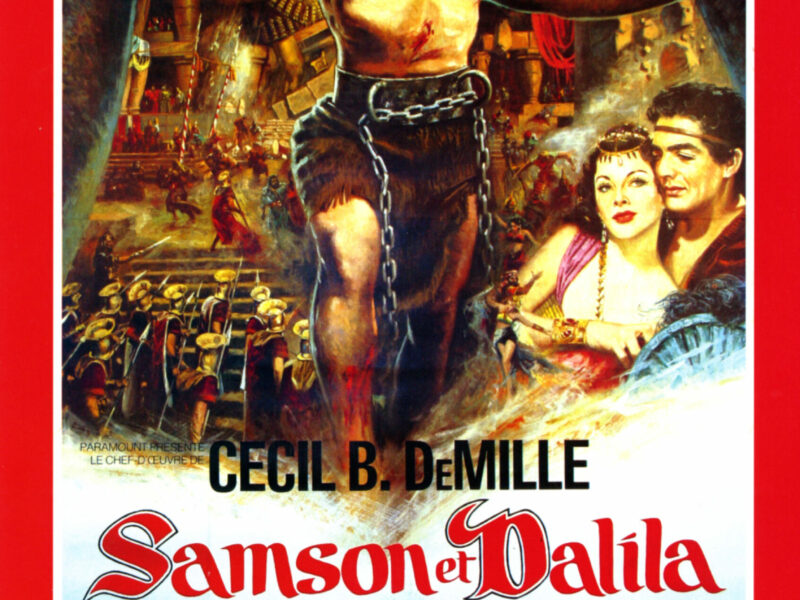
2006
Moving Pictures: The Bible and Beyond opens
Michael Morris, O.P. created a fabulous exhibit entitled Moving Pictures: The Bible and Beyond opens in the library, September 2006, the first stop on a national tour. This exhibition of worldwide cinematic art inspired by the religious epics set in the ancient world, from Adam and Eve to Constantine the Great, included posters, motion picture stills, lobby cards, programs and props.
2006
“Communicatio idiomatum and Aham Brahmasmi: Martin Luther’s understanding of “communication of attributes” and its soteriological implications for Sri Shankaracharya’s understanding of “I am Brahman”” Th.D. Dissertation by Moses Paul Peter Penumaka
Abstract: This dissertation is a study of Martin Luther's concept of communicatio idiomatum and its soteriological implications for Shankara's mahavakya: Aham Brahmasmi. In this study I elucidate how Luther developed the concept of communicatio idiomatum to explain the mysterious unity between the divine and the human natures in the one person of Christ. In Luther's case, this unity affirms our actual human life in and through suffering, as the Godhead takes this actual human experience into the divine life. Communicatio idiomatum in Luther's Christology becomes soteriology. Shankara, in contrast, teaches that the ultimate goal for humanity is to be liberated from ignorance (avidya) in the actual world and be united with Brahman. I argue that human actuality, personal history, or suffering is not addressed when it is denied as maya. Actuality can never be experienced as illusion by the suffering masses, poorest of the poor, dalits, women, and wounded in the world. When Luther's understanding of communicatio idiomatum is brought to bear on the dalit experience, I contend that the actuality of suffering humanity, the actuality of the cross, and actuality for struggle for justice, all become real to the Godhead. My research methodology is both historical-genetic---explicating Luther and Shankara in their respective contexts---and doctrinally systematic---drawing out implications for fundamental ontology. I show in the study of three activist/theologians; Gurram, Sobrino, and Soelle, that it is in the suffering reality of the dalits, the poor, the women, the victims and the wounded, that God is present and communicates the divine nature for redemption. God takes the suffering reality of the oppressed and restores all that has been taken away from the oppressed and in addition gives the oppressed majesty, righteousness and glory. Thus, the soteriological communicatio idiomatum between the oppressed and God by grace through Jesus Christ, becomes a reality in faith. I conclude that any soteriology or system that does not have such perspective loses its soteriological significance and becomes an oppressive structure. The suffering servant in whom both the human and divine natures come together in unity and communication leads us towards the knowledge and experience of the ultimate Truth.
2006
“Humanitarian military intervention: The ethical imperitive vs the rule of law” Ph.D. Dissertation by Eileen Chamberlain Donahoe
Abstract: This dissertation argues that the existing disjunction between ethical and legal justifications for humanitarian military intervention undermines the international rule of law with respect to use of force and negatively impacts the efficacy and consistency of humanitarian military policy. The cause of the this disjunction is located in the unfortunate influence of analytic positivism as the dominant jurisprudential school of thought in the 19 th and 20th centuries, and the implicit and explicit incorporation of positivist assumptions about sovereign consent as the essence of law in the UN Charter. As a solution to this problem, it is recommended that positivism be dislodged from its position of prominence as an analytic tool for explaining international law with respect to humanitarian military intervention and replaced with a conceptualization of legality as inherently tied to ethical and humanitarian considerations. Second, it is suggested that a new international rule of law on humanitarian military intervention be codified, so that the basis of Security Council authorization is clarified. More specifically, it is recommended that the definition of conditional sovereignty be codified, and that humanitarian atrocities with no trans-national or trans-boundary implications be deemed sufficient to trigger Security Council consideration under Chapter VII of the UN Charter. In addition, an explicit ethical/pragmatic basis for Security Council authorization of humanitarian use of force should be codified.
2006
“Visions of awakening space and time: The world-view of Dōgen and the “Lotus Sutra”” Ph.D. Dissertation by Taigen Dan Leighton
Abstract: The Lotus Sutra is prominent among the many sources quoted in writings of Japanese Zen master Dōgen (1200--1253), highlighting the Mahāyāna context of his teachings and world-view. This work focuses on Dōgen's use of the pivotal story in Lotus Sutra chapters fifteen and sixteen-myriad bodhisattvas emerging from underground and the inconceivable life-span of the Buddha---to express his own worldview of earth, space, and time as forces for spiritual awakening. The shift in perspective in this sutra story reflects a fundamental shift in East Asian Buddhist soteriology. A close reading of Dōgen's references to this story reveals his hermeneutical play with its imagery of ground, space, and time, expressing immediate awakening beyond stages of cultivation. Dōgen cites the inconceivable life-span story as an encouragement to present practice, in which he sees the enduring life of Śākyamuni Buddha. Dōgen's presentation exemplifies the fundamental role of metaphor, images, and imagination in East Asian Mahāyāna practice and teaching. Dōgen's view of space and ground as capable of awakening and spiritual agency influences his celebrated teachings on time, expressing the spatialization of temporality. The first chapter introduces the story in Lotus Sutra chapters fifteen and sixteen, discussing its pivotal role in the sutra's meaning and literary structure, and introduces Dōgen's view of space awakening. Chapter two relates a series of hermeneutical and methodological issues involved in the Mahāyāna and for Dōgen, including fundamental Buddhist hermeneutic stances; relevant modern hermeneutic perspectives, especially from Paul Ricoeur; and examples of influences from the Lotus Sutra on Dōgen's discourse style. Chapter three traces responses and commentaries to Lotus Sutra chapters fifteen and sixteen from prominent East Asian Buddhist teachers, featuring early Chinese teachers Daosheng, Zhiyi, and Zhanran; Dōgen's rough contemporaries in Japan, Saigyō Myōe, and Nichiren, and later Japanese Zen figures Hakuin, Ryōkan, and the modern Shunryū Suzuki. Chapter four is a close reading of a range of references by Dōgen to Lotus Sutra chapters fifteen and sixteen. Chapter five discusses Mahāyāna perspectives on earth, space, and time as context for Dōgen's world-view. The Afterword suggests areas for further study.
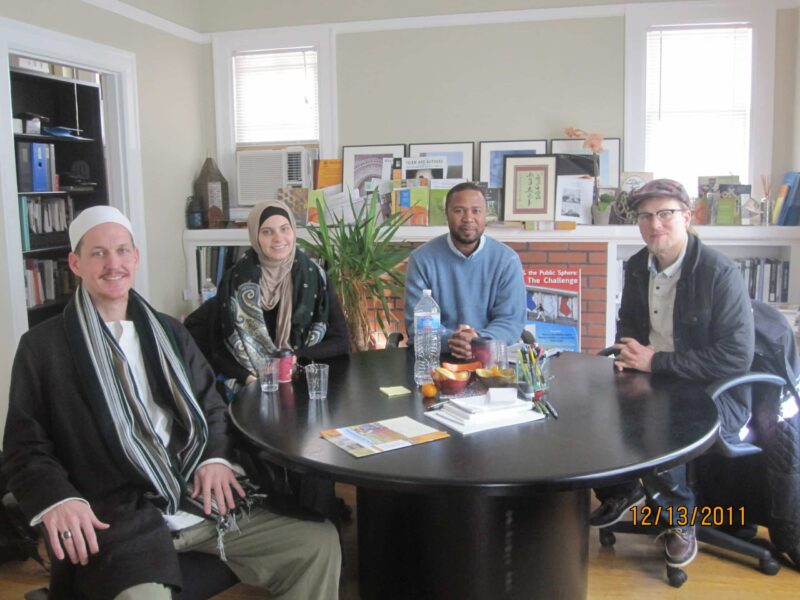
2007
Center for Islamic Studies Opens
With the academic and religious resources to offer a distinctively interreligious and interdisciplinary approach, the GTU founded the Center for Islamic Studies (CIS) in 2007. The center is building an academic platform to help scholars and students of many faiths learn about the richness of Islam and the diversity of Muslims, and emphasizes study and dialogue among contemporary Jewish, Christian, and Muslim communities.
2007
“Garcia Lorca as theologian: The method and practice of interlacing the arts and theology” Ph.D. Dissertation by Cecilia González-Andrieu
Abstract: Federico Garcia Lorca's works offer a richly stimulating theological reflection of consequence to the Christian church. His poetry and theater may be better appreciated in the fullness of their art if one takes into account their theological density. To facilitate such a study of his works this dissertation presents a twostep approach. The first step deals in some detail with the construction of a method of inquiry for engaging art and theology in a mutually respectful encounter. Following upon this as the second step, four of García Lorca's works are engaged as sources of theology. In the first part, the research considers the wider "art and religion" matrix at the beginning of the twenty-first century through a major an exhibition of Christian religious art and the critical response, both scholarly and popular, to it. Following this contextualizing step, the proposed method of interlacing is systematically assembled. The contours of the method are gleaned from the work of scholars Frank Burch Brown and Alejandro García-Rivera, along with other formative influences in aesthetics, such as Plato and Aristotle. The resulting method of interlacing is explicated in some detail, as well as outlined in the appendices for the purposes of teaching and replicating. The second part of the dissertation is an application of the interlacing method to four works by Federico García Lorca. This section begins with a biographical sketch narrowly focused on Lorca's Catholic identity and the very difficult religious/political historical milieu of early twentieth-century Spain. It is followed by an exemplar of the practice of the interlacing method that is applied to four of Lorca's works: the poem "Cry Toward Rome (From the Tower of the Chrysler Building)," the "Ode to the Blessed Sacrament on the Altar," the short poem "Cross," and the early unfinished play "Christ, Religious Tragedy." This section also includes new translations into English of all four of these works. The dissertation concludes with a brief assessment of Lorca's religious insights into a theology of Redemption as exemplified in these works.
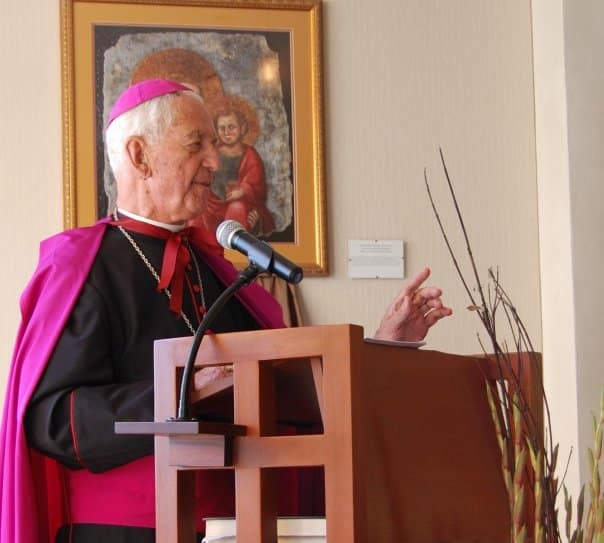
2008
Reading the Signs of the Times: The Heritage and Promise of the GTU by Bishop John S. Cummins
“The invitation to recall some of the early days of the Graduate Theological Union made me quickly realize we will celebrate this institution’s golden jubilee in 2012. John XXIII, who was pope during the founding years of the GTU, once declared that an anniversary is not just an opportunity but an obligation. One trouble with life, he indicated, is that it is 'daily.' We pick up a bit of the dust of the roads as we move along and slip perhaps into routine. Anniversaries provide us opportunity to burnish again the treasures in our lives. I therefore sense some license to anticipate the 50 years’ remembrance, and I beg your indulgence as I view those years from the perspective of an aide to a key player in the Catholic Church’s involvement in this grand enterprise.”
2008
Wireless internet installed in the library
Installing a wireless network recognized the prevalence of laptops and reduced the need for stand alone stations required in the Library. Built before computers were central to libraries, the Library integrated automation and computers as available. Acquisitions began automated ordering in 1986. The online catalog named GRACE (GTU Reference Access Catalog Experience) replaced card catalogs in 1992. Circulation functions went online in 1993. Stand-alone desktop computers were available to use for research and writing. A sound proof, glassed in teaching lab with computer stations and projector opened in 2001, funded by a Lilly grant. The lab was completely updated with moveable furniture and a large smart screen in 2017.
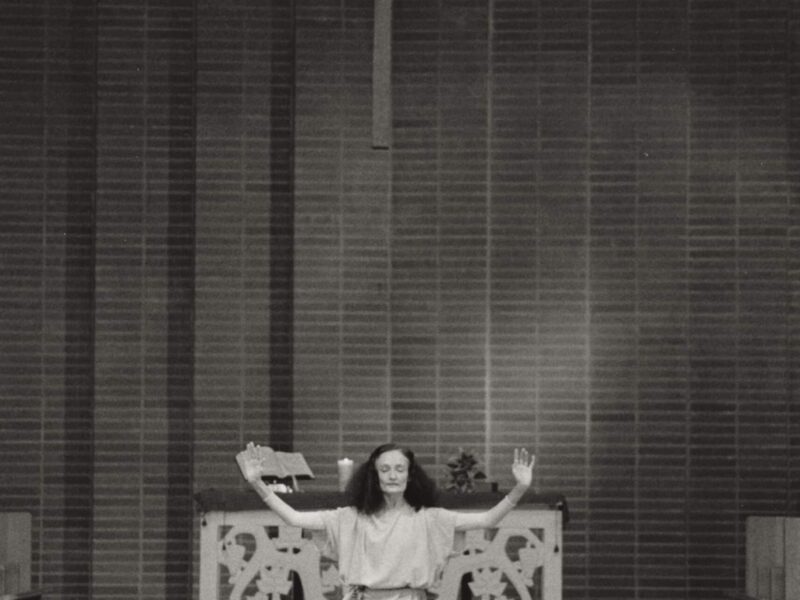
2008
Carla DeSola acclaimed a “Living Legacy”
Carla DeSola, a dancer and choreographer at PSR/GTU since 1990, was acclaimed a “Living Legacy” at the Sacred Dance Guild's Golden Anniversary Festival in 2008. Among her other recognitions, Modern Liturgy Magazine recognized her with the prestigious Bene Award in 1993.
"With an eye not only on ecumenical, but interfaith dialogue, her art embraces peace and justice. She dances on holy ground, always seeking to awaken people to the needs of planet Earth. Such a caring artistry, combined with a deep concern for liturgy, makes Carla DeSola the most influential performing artist of the last 20 years." - Modern Liturgy Magazine, 1993
2008
Full-time Online Learning Specialist Hired
Kyle K. Schiefelbein hired as first full-time Student Coordinator of Online Learning and later becomes GTU Course Design Specialist.
“Technology can shape course design in various ways. But just as the Reformation’s use of the Gutenberg printing press was successful only because of the content of the message, the technology in today’s theological classroom is only as good as pedagogy behind it. My work here at the GTU goes beyond the online environment to assist faculty and doctoral students in incorporating all sorts of technology into a variety of classes. Since technology is only helpful if it is well grounded pedagogically, some courses do not necessarily benefit from incorporating the fanciest computer equipment money can buy. In addition, it’s essential to remember that “technology” encompasses more than just computers and computer-related products; it also includes the classroom furniture, handouts given to students, 3D-printed models, and the like.” - Kyle K. Schiefelbein
2008
“Crossing over: The queering of the religious identities of Edith Stein, a Jewish nun and Regina Jonas, a woman rabbi”Ph.D. Dissertation by Emily Leah Silverman
Abstract: This thesis examines how two Jewish women—Edith Stein, a Jewish nun, and Regina Jonas, a woman Rabbi—crossed over boundaries of religion and gender to express their identities and leadership during the Shoah. Edith Stein converts to Catholicism, but she does not feel that she has abandoned the Jewish community. She becomes a Carmelite, enters the convent, and then writes a book about what it means to grow up Jewish. She refers to herself as “Queen Esther.” Regina Jonas receives her ordination during the Nazi period. In her ordination thesis, she asks and answers the question Can Woman Serve as Rabbis? Both of these women dealt with the Jewish Catastrophe in unique ways, yet both disrupted the normative cultural boundaries of gender and religion. They each embraced two seemingly contradictory identities: Stein as a Jew and a Catholic nun, and Jonas as a woman and a rabbi. I retrieve the voices of these women, examining Stein's letters, autobiography, and philosophical and spiritual writings, and Jonas's ordination thesis and her sermons from Berlin and Theresienstadt. I use the analytical lens of queer theory to examine how Jonas and Stein chose to cross over and thereby “queer” the boundaries of both gender and religion. I take the analysis of gender's performativity, and use it to shed light both on Stein's religious conversion and Jonas' crossing over into the male world of the Rabbinate. I claim that even in times of profound historical crisis, we do not have fixed identities. Instead we have communities to which we belong, and of which we long to be a part. As I compare Edith Stein's queering of religious boundaries and Regina Jonas' queering of gendered ones, I make the case that this queering demonstrates an allegiance to their multiple communities of belonging, even as it disrupts normative cultural boundaries. In the end, it creates a new multifaceted, mixed identity. In their allegiance to seemingly contradictory identity positions, Stein and Jonas each take an ethical stance and engage in a form of spiritual resistance. Both, I contend, are “Hebrews,” in the literal sense of the word: those who have “crossed over.”
2011
“”Falling all around me”: Worship performing theodicy in the midst of San Francisco’s AIDS crisis” Ph.D. Dissertation by Sharon R. Fennema
Abstract: In the public political rhetoric that surrounded AIDS at the height of the crisis in the United States, AIDS was primarily interpreted theologically as God's punishment for the sin of homosexuality. This rhetoric created a social theodicy that made sense of the suffering associated with the AIDS epidemic by correlating homosexuality with sinfulness and developing the image of a (violently) righteous God who punished that sinfulness with a disease that destroys the sinner. At the same time, the people of the Metropolitan Community Church of San Francisco (MCCSF) found themselves at the heart of the AIDS epidemic as they worshipped and ministered in the gay center of San Francisco—the Castro. As a gay-affirming Christian community, they engaged in political activism and pastoral support that sought to disrupt the cultural conflation of homosexuality, AIDS and death. Particularly in their worship, MCCSF endeavored to counter the dominant social theodicy, engaging in ritual activity that performed a counter theodicy. This dissertation investigates worship at MCCSF from 1982–1997 in order to address the "how" question of theodicy in the specific context of the AIDS epidemic: how does God's love act in consort with the human suffering brought about by the AIDS crisis. Elaborating a methodology based on queer theory, particularly the work of Judith Butler, which revolves around mapping difference, deconstructing binary oppositions, and analyzing parody as revelatory disruption, it seeks to further develop the notions currently operative in the field of Liturgical Studies regarding how liturgy performs theodicy by addressing the particularity of suffering and bridging the gap between interpretation and performance. Through the creation of an historical ethnography of worship, several strategies of theodicy operative in the worship practices of MCCSF become apparent, including: performing relational solidarity, enacting simultaneity, and constituting community. These strategies of theodicy form the basis for the beginnings of a performative liturgical theodicy centered on an intimately involved God whose relationality makes suffering meaningful and on the performance of simultaneity that constitutes the Body of Christ with AIDS.
2012
GTU celebrates 50 years
Among the 50th anniversary events, the library held a special "blessing of the library" celebration to open its art and religion exhibition.
“In our tradition it is just transparently clear that libraries and books are agents of blessing not objects of blessing. But I also recalled something that one of our founding saints, Ralph Waldo Emerson, said about libraries. He said that libraries are actually places where we find only friends. Friends who have been enchanted into leathern and paper boxes. So in that spirit, and in the spirit of the relationships that have allowed this library to thrive, I wanted to offer a Transylvanian Unitarian blessing on friendship: "Where there are friends, may there be love. Where there is love, may there be peace. Where there is peace, may there be faith and room for faith. Where there is faith, may there be God. And where there is God, there is all we need." - Susan Ritchie, Associate Professor of Unitarian Universalist History and Ministry, Starr King School of Ministry
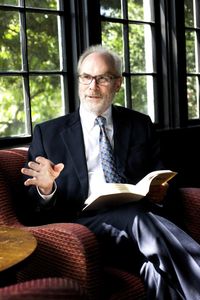
2013
Riess W. Potterveld, President 2013-2018
Dr. Riess W. Potterveld, Pacific School of Religion President, became Acting President of GTU on July 1 and elected President the following June. He served as President of PSR for three years. Potterveld earned his M.Div. from Yale Divinity School, his M.A. and Ph.D. from Claremont Graduate School, and is an ordained United Church of Christ minister. Before becoming President of Pacific School of Religion, he was President of Lancaster Theological Seminary in Pennsylvania for eight years. He also served as PSR's Vice President for Institutional Advancement from 1993-2002, and its Acting Dean from 2000-2002.
“What is attractive to me and probably many of you about the GTU is the sense of living in a highly diverse and interactive community of thinkers which has now moved beyond ecumenical Christian diversity [rich in itself] to embrace other major religions and which has expanded to include centers and affiliates that focus on a variety of aspects of religion and culture, religion and science. The problems considered are both theoretical and practical for we talk often and in an integrated way about fusing critical thinking and leadership development. We are a center for new thought, for disruptive ideas. Each faculty member’s article or scholarly work, each dissertation, engaging conversation, in or outside of the classroom, is innovative, stretching and expanding -- forging new thought about significant problems, many of which have furrowed the brows of thinkers for centuries and millennia. The key to the value is in addition to the dissertations and products produced, we teach a way of thinking, of approaching stubborn problems with an innovative spirit and that is useful in our graduates regardless of the setting and contexts where they carry out their vocation. One of the spiritual disciplines I employed this summer as part of my orientation was to trace some of our graduates to see where they live and work and what they are doing to transform this human, animal, and inanimate world for the better. They are doing stunning work – they have taken what they have learned out into the world as critical and creative leaders. Religion like all other fields is not only focused on what has been but on what is becoming and here we live in an exceptional and stimulating environment that allows us to attend to both domains." - Riess W. Potterveld, Inaugural Address, 2014
2013
Area protocols revised
Students entering the Ph.D. program at the GTU can choose their fields of study from among more than thirty concentrations grouped into four interdisciplinary departments: Sacred Texts and Their Interpretation; Historical and Cultural Studies of Religion; Theology and Ethics; and Religion and Practice. The doctoral curriculum builds on the ecumenical, interreligious, and interdisciplinary strengths of the GTU, and offers enhanced opportunities for both specialization and cross-disciplinary study. The GTU’s doctoral program utilizes the depth of faculty expertise made possible by its eight member schools and more than a dozen academic centers and affiliates.
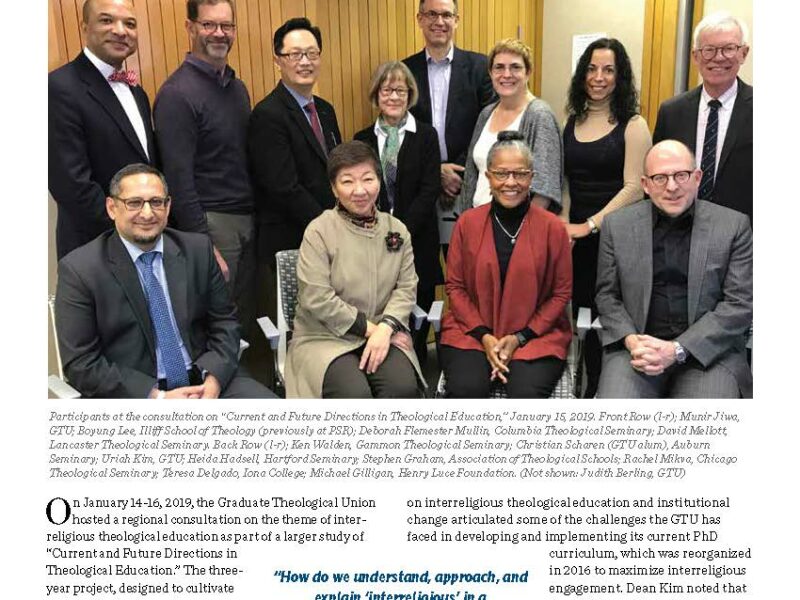
2014
Board affirms interreligious nature of GTU
The GTU Board of Trustees unanimously passes a resolution that affirms the interreligious nature of the Graduate Theological Union and opens the way for other religious traditions to join the Protestant, Catholic, Unitarian, Jewish, Buddhist, and Muslim communities already represented here. The statement highlighted the representation of the world’s diverse religious traditions as essential to the GTU’s nature and integral to its mission. It went on to encourage the GTU President to work to “expand and foster representation of the world’s great religious traditions” by seeking out new candidates for consideration as program units, affiliates, and centers for inclusion in the GTU.

2014
Sacred World Art Collection donated
The Institute for Aesthetic Development (IAD) and F. Lanier Graham donated an extensive teaching collection of sacred objects to the Graduate Theological Union. An online exhibition featuring forty of the over 500 spiritual and ritual objects from the collection is here: https://www.gtu.edu/sacred-world/
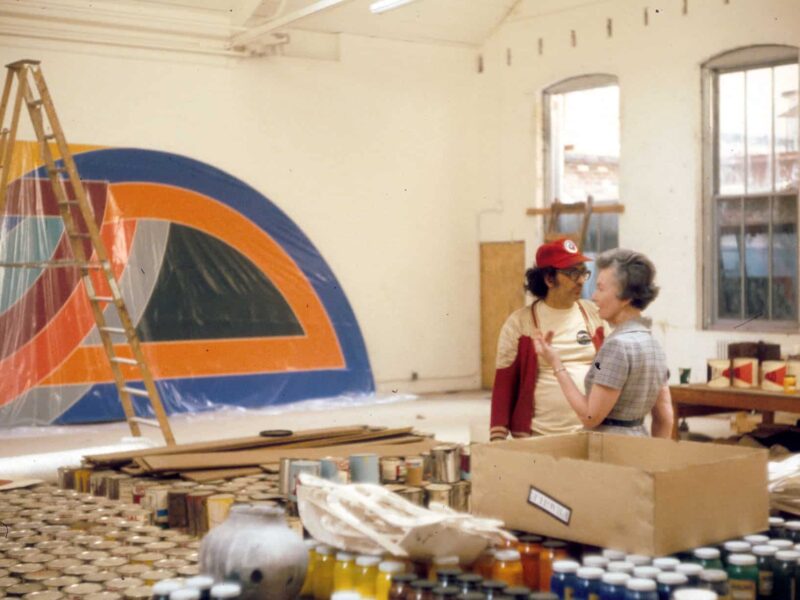
2014
Jane Daggett Dillenberger and John Handley publish The Religious Art of Pablo Picasso
Following her remarkable book on the Religious Art of Andy Warhol, Dillenberger, at 98, publishes a similar work on Picasso. She arrived with her husband John in the 1960s and remained at the GTU as the professor who merged religion with modern art.(Image is of Jane Dillenberger with Frank Stella.)
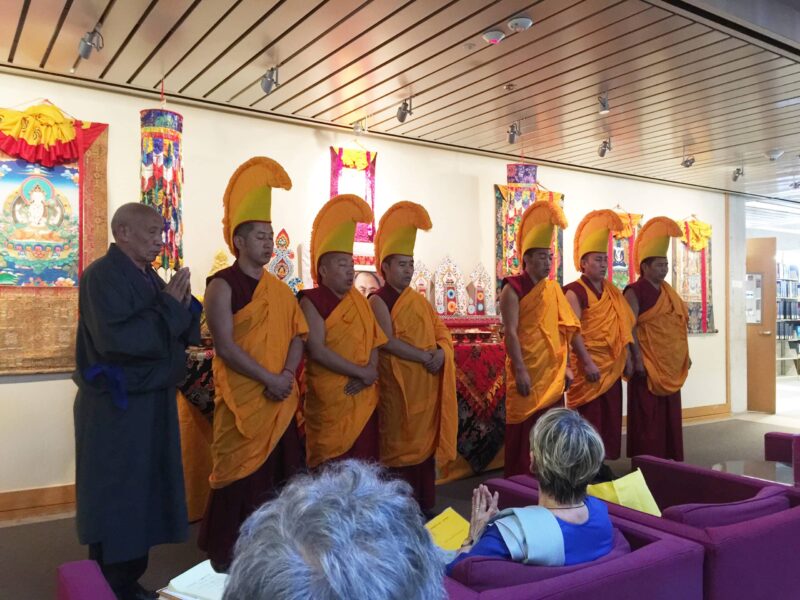
2015
In Celebration of Tibetan Year 2142: Year of the Wood Sheep
An exhibition of Tibetan art and artifacts from the Sacred World Art Collection, the Northern California Tibetan Community, and the Graduate Theological Union Special Collections was held in the library from February through April. Featured were a full Tibetan Shrine, unique Tibetan objects, and Thankas on loan from Jamyang Lama of the Tibetan Culture House. Along with a general celebration upon the opening of exhibit, including musician Tsering Dorjee Bawa, the Venerable Thepo Rinpoche, gave the annual Sacred Text lecture on “Life as Sacred Text: The Life and Times of a Tibetan Monk.”
2015
Center for Dharma Studies founded
The Center for Dharma Studies (CDS) was founded with the support from Mira and Ajay Shingal. The CDS is a programmatic Center through which the GTU offers its MA and expansive Ph.D. programs in Hindu Studies, Jain Studies, and Yoga Studies. CDS is the first such center in the nation, and is also a hub for Dharma & Sustainability Studies, promotes interdisciplinary scholarship, and supports interreligious interchange and understanding.
Dharma studies, as an academic field, is particularly important at this time of climate change, ecological destruction and social disruption. As the work of critical theorists of the global south argues, critical indigenous knowledge systems — situated within non-Western religious cultures — should also be considered as resources for thinking about the complex challenges that now confront humanity. This inclusion in the struggle for global solutions allows us to reclaim, reinterpret and reapply principles, philosophies and practices (such as “mindfulness” and “radical nonviolence” or ahimsa) that lie latent within the vast reaches of the Hindu and yogic traditions, along with other religions under the purview of dharma studies. The term “dharma studies” is known in North America as signifying not just “South Asian” religions and culture but, rather, the life-worlds of the three traditions [Hindu, Buddhist, Jain] in their diverse global expressions — whether in South Asia, the region of their emergence, or elsewhere in Asia, the West and diaspora communities: transnationally, beyond the markers of borders, nationalities and ethnicities. Dharma studies at GTU is crucial to this effort, as it uses transdisciplinary research methodology, or TRM, which applies a critical-creative lens to specific problems while bringing in the capacities of diverse fields. “Religious Education is Essential in Berkeley,” Rita Sherma, Faith 2019 OP-Eds, The Daily Californian, April 30, 2019. She is the Director of the Center for Dharma Studies.
2015
“The one, the many, and the philosophy of science: A comparison of Trinitarian and Buddhist epistemologies” Ph.D. Dissertation by John Barry King
Abstract: This dissertation compares Trinitarian and Buddhist epistemologies relative to the benchmark of scientific knowledge. To this end, it first develops a methodological framework for this comparison and then derives a comparative benchmark from the post-positivist philosophy of science. The methodological framework is developed by combining Francis Clooney's comparative theology with Robert John Russell's method for the Creative Mutual Interaction (CMI) of theology and science. The comparative benchmark is given by the Peircian triadic circuit since this circuit emerges as a methodological invariant within the post-positivist philosophy of science. Trinitarian and Buddhist epistemologies are therefore compared in terms of their respective abilities to ground the Peircian circuit. However, since the Peircian circuit involves a harmonious integration of three distinct operations within a single noetic process, the ability to ground this circuit presupposes a solution to the one-andmany problem. Thus, Trinitarian and Buddhist epistemologies are ultimately compared in terms of their respective approaches to the one-and-many problem. To this end, Theravada, Zen, and Tibetan Buddhist epistemologies are compared with Trinitarian epistemology. These Buddhist Schools have been chosen due to their active participation in the Buddhism-and-science dialogue. Prior to making this each tradition receives a detailed philosophical exposition in which its epistemology is derived from its metaphysical commitment to oneness, manyness, or some combination of the two. Finally, these systems are compared in terms of their respective abilities to solve the one-and-many problem and hence to ground the Peircian circuit. This comparison shows that Trinitarian theology can ground the Peircian circuit because it has a both/and approach to the one-and-many problem and also supports an exhaustive cosmic personalism. By contrast, Theravadin Abhidhamma fails outright because its radical pluralism dissolves the human mind and hence all three Peircian operations. Between these two extremes, Tibetan Madhyamaka and Zen provide a dialectic of oneness and manyness in which the Peircian circuit is neither grounded nor destroyed. For these last two systems, therefore, the Peircian circuit emerges as a de facto structure of conventional knowledge
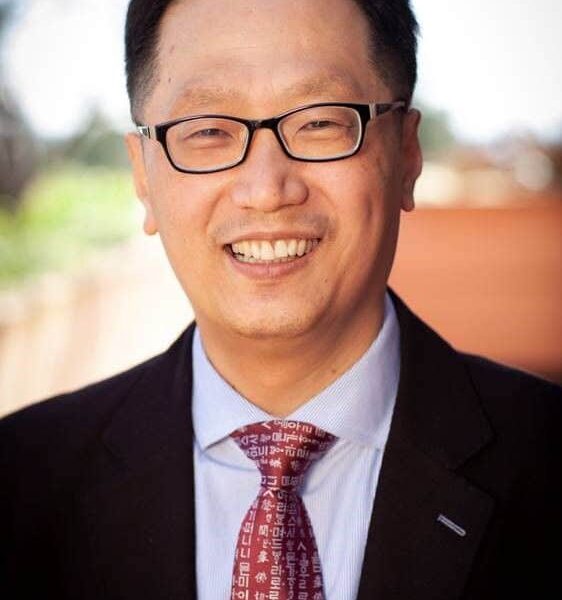
2016
Uriah Y. Kim, Dean (2016-2020), President (2020-Present)
Earning his PhD from the GTU in 2004 and standing as a highly regarded member of the larger religious and theological academy, Dr. Kim was honored as the GTU’s alumnus of the year in 2013 and served as Dean and Vice President for Academic Affairs beginning in January 2017. Undergoing an extensive, rigorous, and competitive vetting process prior to his appointment as Dean, Dr. Kim joined the GTU following his tenure as Dean of Hartford Seminary in Connecticut. As Dean of the GTU, he proved instrumental in crafting a new vision for the institution, while building trusting, collaborative partnerships with academic leadership, faculty, and other stakeholders across the school and consortium—a further reflection of Dr. Kim’s deep and unwavering commitment to the values and mission of the GTU. Dr. Kim served as Interim President beginning in February 2020, and was unanimously selected as the GTU's ninth president during a special convening of the Board, which includes representation from the presidents of all consortium member schools.
"In addition to groundbreaking scholarship, said Kim 'we produce jeong on Holy Hill.' Jeong is a Korean word that describes a ‘stickiness’ in people relations that Kim says forms as 'a product of the everyday things we do that form and maintain relationships—eating, drinking, talking, working together, spending time together.' He added that this same connectedness that’s created among people as they work and share time together, is also formed between humans and God, as we worship, pray, and work for justice. Kim contends that it is this jeong, this stickiness in our relationships with one another and with God, that truly enables the vital scholarship that happens at the GTU." - Doug Davidson, "Alum of the Year: Uriah Kim", 2013
2016
Center for Swedenborgian Studies becomes consortial affiliate
The Center for Swedenborgian Studies (CSS) has trained scholars and clergy since 1866. Today it is the official seminary of the Swedenborgian Church of North America, also offering New Religious Movements, Western esotericism, and mysticism studies.
2016
“Reinhold Niebuhr’s theological anthropology in light of evolutionary biology: Science shaping anthropology shaping ethics” Ph.D. Dissertation by Braden Molhoek
This dissertation argues that when Reinhold Niebuhr's anthropology is informed by evolutionary biology, the resulting framework provides increased moral significance for relationships of humans with each other and non human creation and reemphasizes humanity's responsibility as created co-creators. After exploring briefly the life and context of Reinhold Niebuhr, his criticism of his contemporaries' response to science is used as a starting point to placing his thought into conversation with insights from the theology and science dialogue. In order to further this conversation, the details of Niebuhr's anthropology with special attention to sin are explored. In order to have a more fruitful dialogue the focus tightens in on the concepts of original sin and original righteousness. Niebuhr's understanding of these concepts is the starting point, but insights from the natural sciences as well as the theology and science dialogue are incorporated to re-imagine aspects of Niebuhr's anthropology. The project concludes with examining three current issues in order to show that the conversation between Niebuhr's anthropology and science and religion not only changes the anthropology, but also has implications for theological ethics. These changes include methodological concerns for virtue ethics; original sin requires virtue ethicists to be more intentional about the kinds of friendships they form. There are also implications for environmental ethics, where human relationships with other organisms can affect their relationship with God. Stewardship should also be re-imagined as trusteeship, where humans can benefit some from the rest of creation, but ultimately are meant to ensure the flourishing of the trust for all of creation. Finally, in the context of biotechnology, changes to human DNA could result in changes to human nature. Sin as pride and sensuality are both operative in the pursuit of biotechnology, so there should be guidelines to identify appropriate uses of biotechnology.
2016
“Performed polygamy and polyamory in the media age: The “tel-education” of nonmonogamous religious and spiritual families in reality television” Ph.D. Dissertation by Michelle Mueller
Abstract: This dissertation is a study of consensually nonmonogamous religious minority families who have performed in the reality television series, Sister Wives, My Five Wives, and Polyamory: Married and Dating. Its thesis is that religious minority families have utilized reality television as a medium for transformative advocacy, to which I give the name “tel-education.” These families make use of storytelling and documentary formats in reality television to educate viewers about their lives, normalize by example, and thereby change public opinion about the minority group. The methodology is a mixed methods approach of content analysis, participant-observation, and qualitative interviews with reality television performers and members of the represented communities where possible. The communities represented include Mormon fundamentalists, progressive polygamists, secular polyamorists, and Western Tantric polyamorists. I discuss reality television content and its relation to distinctive characteristics between Mormon fundamentalist groups, spiritual affiliations found in the polyamory movement including consideration for cultural appropriation in polyamorists’ Western Tantra, nonmonogamous families’ relation to U.S. federal and state anti-bigamy and anti-cohabitation laws, and the effect of race, class, beauty and size privilege in Hollywood reality television on the representation of U.S. religious and spiritual nonmonogamous families. My observations relate with findings from Stuart A. Wright and Susan J. Palmer (2015) about the stigmatization of new religious movements. Marginalized religious and spiritual nonmonogamous families make use of the reality television medium to change their media story. They present scenarios from their lives to counter common stereotypes and to raise awareness around the possible injustices of U.S. legal policy for nonmonogamous families. The dissertation contributes to religion and media studies, religion and sexuality, new religious movements, and religion and the law.
2016
“Queer bodies, sacred art” Ph.D. Dissertation by Justin Tanis
Abstract: This dissertation explores the ways in which a study of spiritually themed art by lesbian and gay artists can broaden our understandings of queer theology and the spirituality of the lesbian, gay, bisexual, transgender and queer (LGBTQ) communities. Very little has been written about religious themes in art by LGBTQ artists within theology, art history or queer theory; this dissertation brings these disciplines into dialogue. Queer theology has considered the role of the LGBTQ viewer but not modern LGBTQ artists, while art history and queer theory tend to be profoundly secular in their analyses and ignore religious content. Four artists, each working within a distinct cultural setting, are considered in detail here: Nahum B. Zenil, Alma Lopez, Delmas Howe and Elisabeth Ohlson Wallin. Zenil is a Neo-Mexican self-portraitist who reflects his Mexican Catholisicm in his art. He utilizes traditional art forms with explicitly gay- and body-affirming content. López is a Chicana feminist artist who specializes in collage, digital art, and painting. Her work arises from within and in conversation with Mexican-American feminist art and writings, including reconceptualizations of the Virgin of Guadalupe, pre-contact Mexican goddesses and female saints. Howe features the cowboys of his native Southwest to tell ancient stories of love and desire between men. He utilizes themes and characters from Greek mythology and legend visiting the modern rodeo. Ohlson Wallin is a Swedish photographer who focuses on community based art. Her work in Jerusalem is featured here, in which she projects antiLGBTQ passages from Jewish, Christian and Muslim sacred texts into images with LGBTQ Palestinians and Israelis. Each artist is described in light of her/his biography and genre; several works of art by each artist are then considered in detail. Their art is then placed in dialogue with related writings or themes by LGBTQ authors and theorists. Finally, the artists are considered together in a discussion of common themes and motifs. More importantly, it also illustrates how each work of art contributes to the understanding of queer loving, a positive view of sexuality, and a radical form of inclusion.
2017
“”Flesh that dances”: Constructing a womanist liturgical theology of embodiment” Ph.D. Dissertation by Khalia Jelks Williams
Abstract: This dissertation argues that embodied experiences of African American women are crucial consideration for a womanist liturgical theology of embodiment. Through the intersection of womanist theory, dance performance analysis and liturgical theology, this project engages worship in the Black Christian church by interpreting liturgical experiences of African American women through a womanist lens of wholeness. Constructing a liturgical theology that focuses on the bodies of African American women embraces physical bodies as a manifestation of wholeness, and provides insight for alternative worship practices that promote justice and wholeness in worshiping communities. Careful engagement of lived experiences of African American women in worship, through the power and inspiration of the Holy Spirit, may reclaim the objectified bodies of our ecclesial body through the love and acceptance of all bodies in the grace, beauty and power of the body of Christ.
2018
Daniel L. Lehmann, President 2018-2020
President Lehmann is a Rabbi and the first non-Christian leader in the institution’s 57 year history. Among his achievements were: Substantial fundraising including a new $2.5 million grant from the Hellman Foundation which launched a new interreligious chaplaincy program and enhance other programs in Islam/Jewish studies; Establishing GTU’s first online program, a certificate in Interreligious Studies which launched in Fall 2020; Expanding existing partnerships such as one with the University of California, Berkeley and creating new ones such as a program with Stanford Medical School; Establishing the first World Music Festival in the Bay Area which was very popular and well attended.

2019
ResoNation Celebrates Sacred World Music
GTU hosted ResoNation: Sacred Sounds Beyond Borders, Berkeley’s first sacred world music festival, on Saturday, September 21. The locally based performers represented musical traditions from across the world, selected by Dr. Eleanor Shapiro, a recent GTU graduate (Dissertation: “The Sound of Change? Performing ‘Jewishness’ in Polish Small Towns”). The following day the performers and other musicians joined to present hands-on workshops. Lessons included the technicalities of Eurasian and Eastern European chant, the movements of capoeira, Christian African Roots music, North Indian Baul moves, and how the music of Beyoncé was used in a womanist worship service.
2019
“Unsettling the landscape: representation, appropriation,and indigenous aesthetics in the land art of the American Southwest” Ph.D. Dissertation by Yohana Agra Junker
Abstract: Representation of the landscape have been considered one of the most consequential subjects in Western visual arts for at least five centuries. When artists choose to delineate the landscape in their artistic productions, they participate in the ongoing history of shaping and interpreting our relationship with the physical environment. The way the re-present the land tells the story of how we have concomitantly framed, engaged, and abstracted our relationship to the natural world. This project provides a historical appraisal of imaginaries amalgamated in the landscape of the Southwest of the United States. Part of its objective is to bring to light that which has been submerged under the surface of the southwestern terrain via the aesthetic in order to demonstrate how some artistic production - such as the Land Art Movement are complicit in the colonial project.It also traces and documents how the Indigenous artistic productions in the US continue to offer counter-narrativesthat interrogate and interrupt the colonial project while protecting Native American life, histories, and land. Taken together, they disclose possibilities for questioning the troubled history of aesthetic representation and human intervention with the landscape while offering opportunities for engaging with the environment eco-critically, as a dynamic entity, in reciprocity, interdependence, and planetary emergence
2019
“The Impact of Theological Foundations of Restorative Justice for the Human Rights Protections of North Korean Stateless Women as Victims of Human Trafficking” Ph.D. Dissertation by I Sil Yoon
Abstract: Korean women who reside in China. The human trafficking experienced by stateless women causes moral injury that violates the human rights of the victims, leaving them With physical, emotional, and spiritual wounds. North Korean female refugees residing in China can easily become the target of trafficking by those who attempt to take advantage of their illegal status-such as the brokers who aided their escape from North Korea and their employers in China. Their vulnerability is intensified by the politicized and exclusionary nature of citizenship that privileges citizens and discriminates against others. North Koreans generally stay in China temporarily before they escape to South Korea and are considered stateless due to their lack of membership in any country. They cannot receive legal support for the crimes they are victims of, nor are they guaranteed basic rights. As a response to the crime of human trafficking, I will address the rnlue of the foundations and practices of theologically-infonned restorative justice. Restorative justice, with its most prominent characteristic being rebuilding social relationships among victims. perpetrators. and the community that ,vas damaged by a crime, has been proposed as an alternative to the traditional retributive justice model to treat criminal acts. I will explore how a theologically-grounded restorative justice model can contribute to the thought and action of Christians and the larger public in the face of the moral injury caused by human trafficking against North Korean women in China. Its concern for the socially marginalized can aid the victims' healing from the crime by recognizing their dignity and helping their voices to be heard. Furthennore, I will address how this model, in its complementary relationship with other justice systems, can caII for cooperative efforts from local and global communities toward broader systemic change. This can protect the victims' rights, such as through the juridical implementation of improwd immigration policy and citizenship law.
2020
Diandra Erickson becomes Director of Digital Learning
Diandra Erickson (PhD, 2018) becomes Associate Dean of Teaching, Learning, and Assessment and Lecturer in Course Design and Pedagogy. Already on a path to provide more extensive online learning, GTU’s response to COVID-19 made the process more critical. Erickson led and assisted faculty to an online and hybrid engagement. Other digital learning initiatives continued: increased online library resources; the Certificate in Interreligious Studies online program; remote instruction options for the Certificate in Interreligious Chaplaincy; and initiating GTUx, a global destination for digital learning.
2020
Newbigin House of Studies becomes consortial affilate
Newbigin House is an ecumenical study center developing leaders through theological education. They are committed to renewing a vision for Christian ministry in a rapidly changing world by training and mentoring missional leaders in partnership with churches and seminaries.
2020
Interreligious Chaplaincy Program begins
The Interreligious Chaplaincy Program is designed to equip professionals with the skills and interreligious understanding necessary to offer spiritual care among increasingly diverse populations. This is one of the certificate programs that GTU has developed "toward empowering working professionals to apply the insights of interreligious scholarship to creatively address contemporary needs."
“Interreligious chaplaincy is an urgent need. The moment in which we are living requires moral clarity and ‘spiritual audacity.’ As a chaplain I can be agile: I can meet people where they are with their spiritual needs at different points in their lives and, importantly, I can provide avenues for ways in which to act in accordance with my traditions teachings of justice, compassion, and the holiness of connection.” - Doria Charlson, Ph.D., GTU’s First ICP Graduate
2020
“End of Life Care and Islamic Practical Theology: A Case Study: The Dying Experience of Prophet Muhammad” Ph.D. Dissertation by Kamal Abu-Shamsieh
Abstract: The Islamic tradition regarding end-of-life care and postmortem care has been rooted primarily in practices and rituals related to offering intercessory prayers and affirming faith prior to death and preparing the deceased for funerals and burials from an Islamic legal perspective. Modernity, including advances in medicine and new approaches to healthcare, has created new and complicated choices at the end-of-life that challenge those rituals. As a healthcare chaplain, I have heard stories from religiously and ethnically diverse Muslim patients and families who struggle to reconcile Islamic law and ethics with the possibilities of modern medicine and the expectations of a secular culture while remaining faithful to Islamic teaching about illness, death, and faith. A new approach to rituals and end-of-life care is essential to provide a congruent Islamic methodology of care faithful to the Islamic tradition and yet flexible enough to adapt to the challenges and needs of Muslim people who are at life’s end. This thesis is a qualitative study in response to this new circumstance. Islamic revealed sources play an essential role in shaping the rituals and life practices of Muslims who strive to follow the commands in the Qur’an and the Tradition (Sunnah) of Prophet Muhammad. The biography (Seerah) of the Prophet’s death is significant because it is one of those revealed resources that demonstrates how Muslims should respond to death. The authors of the Seerah meticulously describe the final days of Prophet Muhammad, including rituals and practices, emotions of the immediate family, the community response to news of his death, and the timeline of the burial. The literature narrates the intense physical and spiritual experience of Prophet Muhammad as he embraced death while affirming faith in the Oneness of God (tawḥīd). This dissertation examines the dying and burial of Prophet Muhammad as a case study to critically reflect on practices and procedures that inform what Muslims understand to be possible as well as necessary ritual practice at life’s end. This critical reflection focuses on three main themes: the awareness of the Prophet of the imminence of his death, the rituals and practices in dying, and post mortem care. The goals of the reflection are to understand the meaning of ‘embracing death’ from the perspective of Islamic theology and the implications of that belief for modern Muslims at life’s end.
2021
Institute of Buddhist Studies becomes member school
The Institute of Buddhist Studies (IBS) becomes the GTU consortium’s ninth member school, following thirty-six years of collaboration as a GTU affiliate. IBS is the first non-Christian institution to be represented among the GTU’s member schools, further living out the GTU’s commitment to fostering interreligious life, learning, and leadership. IBS becomes the GTU consortium’s ninth member school, following thirty-six years of collaboration as a GTU affiliate. IBS is the first non-Christian institution to be represented among the GTU’s member schools, further living out the GTU’s commitment to fostering interreligious life, learning, and leadership.
2021
The Wilmette Institute becomes consortial affiliate
The Wilmette Institute is a higher educational institution offering courses in Bahá’í history, texts, and the Bahá’í approach to social transformation. Established in 1995, the Wilmette Institute now offers between 65 to 70 online courses per year for about 1,800 students. They intend to offer certificate programs in the coming years in addition to new courses each semester covering Bahá’í history and sacred texts, as well as a wide array of topics on sustainability, environmental ethics, peace education, countering racism, the advancement of women, and establishment of a stable and just global system.
2021
GTU 2.0 Announced
Uriah Kim, president, announces a 5-year strategic plan creating GTU 2.0 in January 2021. The plan places GTU as an expansive effort to be increasingly present and active as a theological insitution within the world. It calls for a global effort, utilizing new educational technologies; applying a spiritually rooted theological education to a broad range of interests; and collaborating with partners and people to create and share new content.
2021
“Homo Oikos Sacralis: Redefining Human Being in the Face of the Environmental Crisis” Ph.D. Dissertation by Myoung-Ho Sin
Abstract: This dissertation seeks a redefinition of our self-understanding for addressing the ecological crisis as human being is at the center of this crisis as both - victims and perpetrators. Our environmental crisis is at the heart a humane crisis because it follows the same principles as discrimination against racial minorities, women and foreigners. As such, it argues that our current concept of human being has historically shown to be incapable of dealing with our socioenvironmental crisis in a holistic way. Using Paul Tillich’s method of critical, interdisciplinary correlation, we start with a historical analysis of the doctrine of creation and continue with a cultural-historical comparisons to show how climate change and discrimination against certain groups are related and enforcing each other. After an in depth analysis of the imago Dei and the theologies of Maximus the Confessor and Jürgen Moltmann, the author then proposes the concept of homo oikos sacralis which is portrayed by six characteristics: First, it is able to expand the concept of family to include all human and non-human beings in one house. Second, it can incorporate the value to regard life as sacred and therefore, make sacrifices to protect life. Third, it is able to imbed technological achievements into moral values so that the whole creation community may prosper and life in a more peaceful world. Fourth, it is free to see and act interdependently to restore broken interrelationships between humans and earth, men and women, and races and nations. Fifth, it is able to bring justice-making shalom by recognizing earth as our home - a place of safety and refuge. Sixth, it is able to enter into a covenant with God, others, and nature and keep mutual commitments. As a practical application this dissertation describes the DICE model which is an integrated assessment model to calculate the social cost of carbon. By including inequality, a carbon tax is proposed that can be used to mitigate climate change and help people and nations that are disproportionately affected to adapt to the changing climate. As such, this measure can address the impact of climate change and discrimination at the same time.
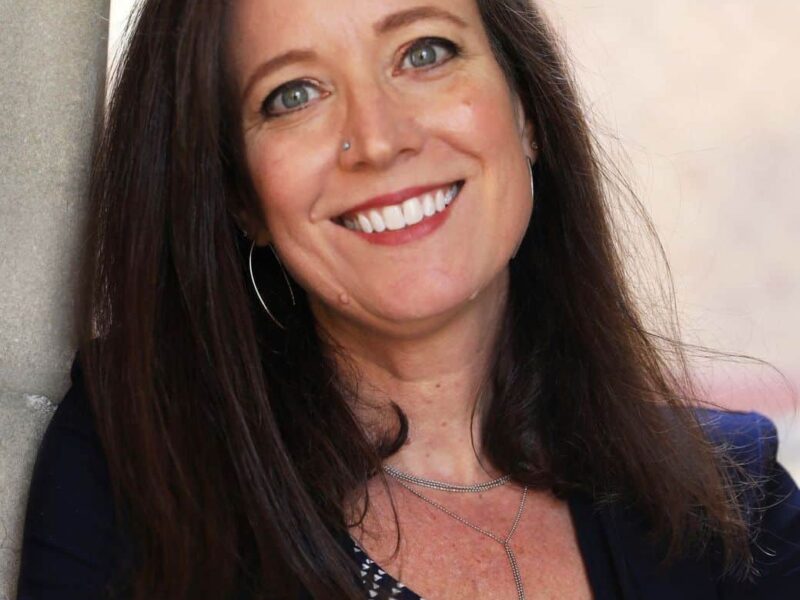
2022
Jennifer W. Davidson, Dean 2022-Present
Dr. Davidson earned her PhD from the GTU in 2011 in Liturgical Studies with an expertise in Systematic and Philosophical Theology, an MDiv from the Lutheran Theological Seminary at Philadelphia (now United Lutheran Seminary), and a BA in English and Secondary Education from Eastern University. She is the author of River of Life, Feast of Grace: Baptism, Communion, and Discipleship (Valley Forge, PA: Judson Press, 2019). Her most recent work focuses on trauma-informed pedagogy and has been published in multiple academic journals.
“Rooted in a history of radical collaboration and bold innovation, the GTU is uniquely poised to face current challenges and continue as a leader in shaping the future of graduate education in theology, religious studies, spirituality, and wisdom traditions. Accelerated changes in higher education over the last two years have compelled staff, faculty, and students to lean into our agility, inventiveness, creativity, and resiliency. I am devoted to the people, work, and mission of the GTU, where we dedicate ourselves to interdisciplinary and interreligious scholarship that is holistic, sustainable, and committed to equity and belonging." - Jennifer W. Davidson, Dean
2022
Hewlett Building Alterations Begin
The alterations began in 2022 and will include: Transforming digital collections: improving access to resources to support online education. As digital collections are expanded, print resources are not being replaced; Transforming infrastructure: to support hybrid services. The Library will maintain traditional library services while advancing cutting-edge resources, technologies, and services; Transforming campus footprint: the Hewlett Library alterations will bring the GTU community together under one roof, increasing unity and collaborative opportunities.
The Flora Lamson Hewlett Library is the heart of the Graduate Theological Union — symbolically, intellectually, and physically. The building and its services are central to preparing GTU students to create transformative impact felt around the world.
2022
The GTU celebrates its 60th anniversary
Share your memories of the past 60 years of the GTU below, or on social media by tagging @gtuberkeley and using #GTUat60
Help Us Build a Brighter Future for the Next 60 Years — and Beyond
The world we imagine in another 60 years begins with the vision we have today. Join us in shaping the next six decades of the GTU as we commit together to a vision of a brighter future.
Share Your GTU Memories
Theology on Tap at Daily Pint with Therese Marie Ignacio Bjørnaas, Justin Lipscomb, Saad Shaukat, and others!
Henry Kuo
My favorite GTU memories are all of the deep talks I've had with friends on the PSR lawn - especially when the sun was setting over the Bay.
Victoria Price
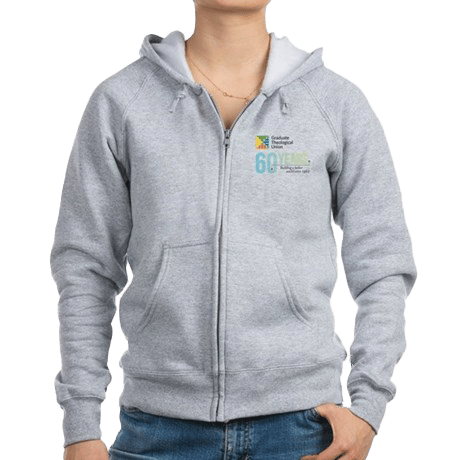

Get your limited edition 60th Anniversary swag!
All proceeds go to support GTU students!
